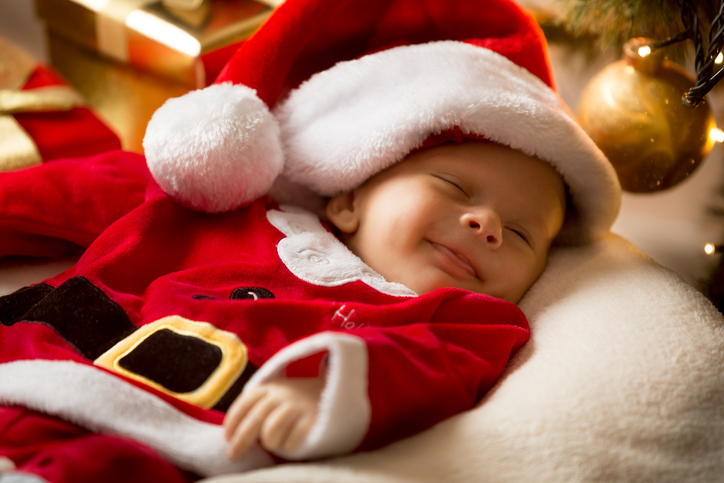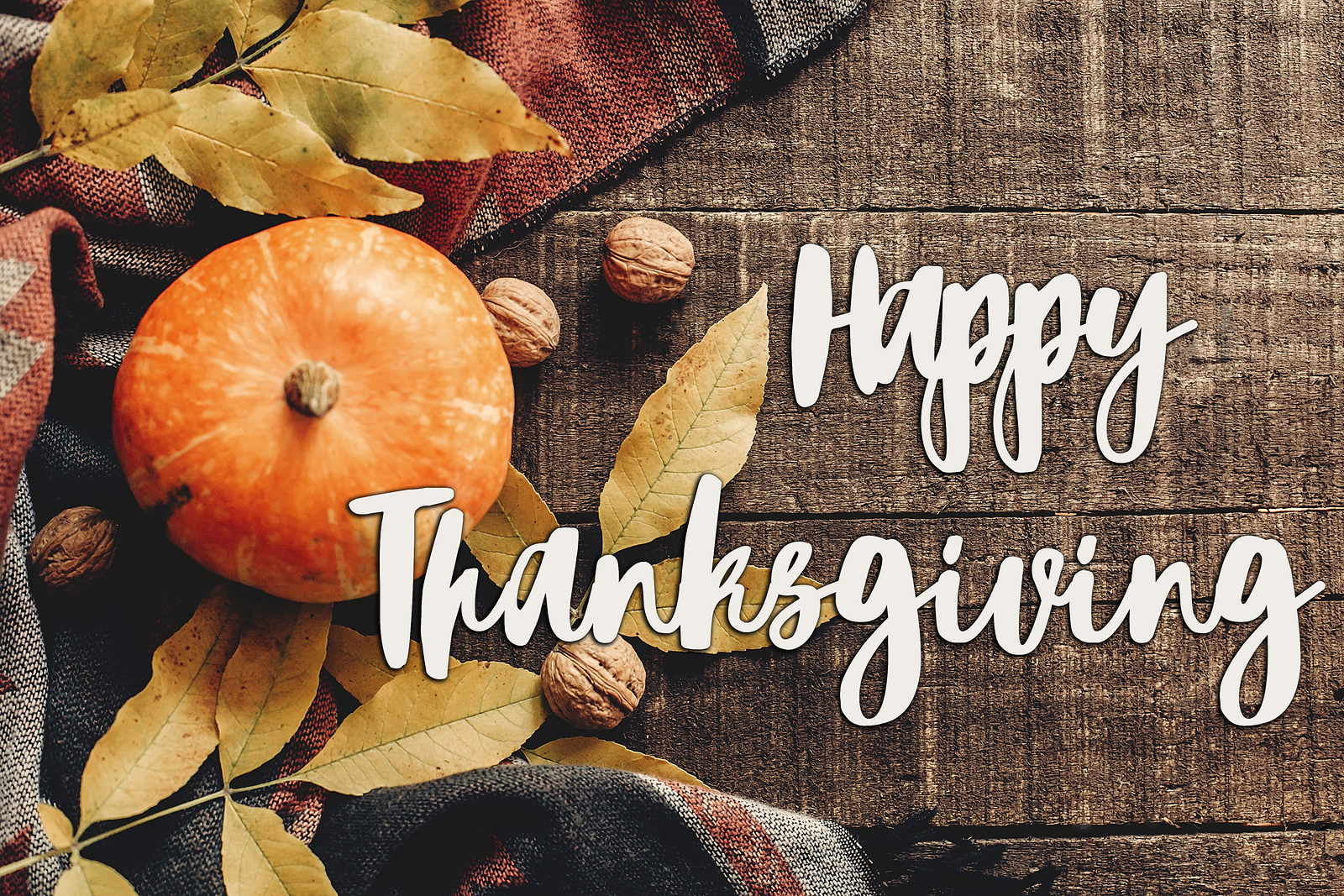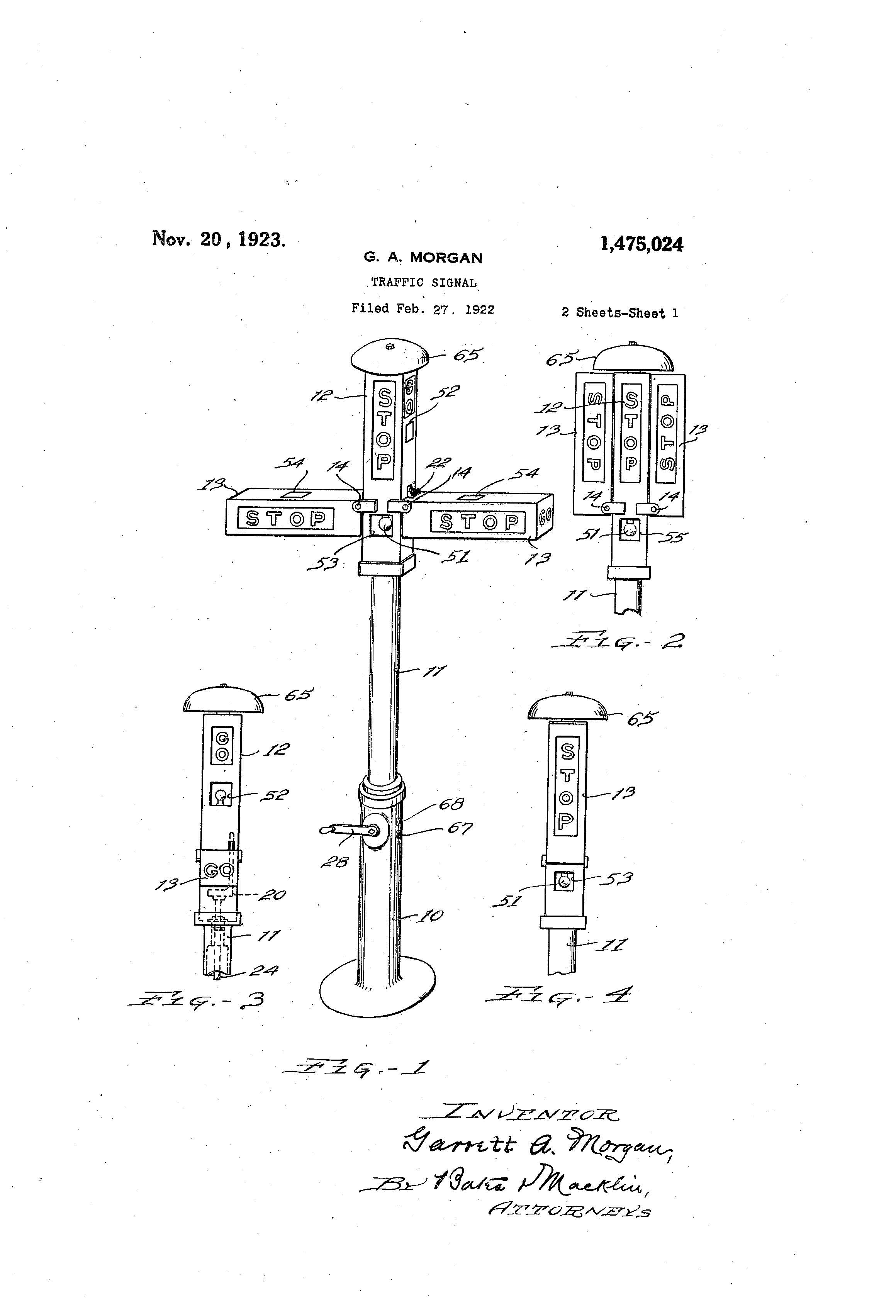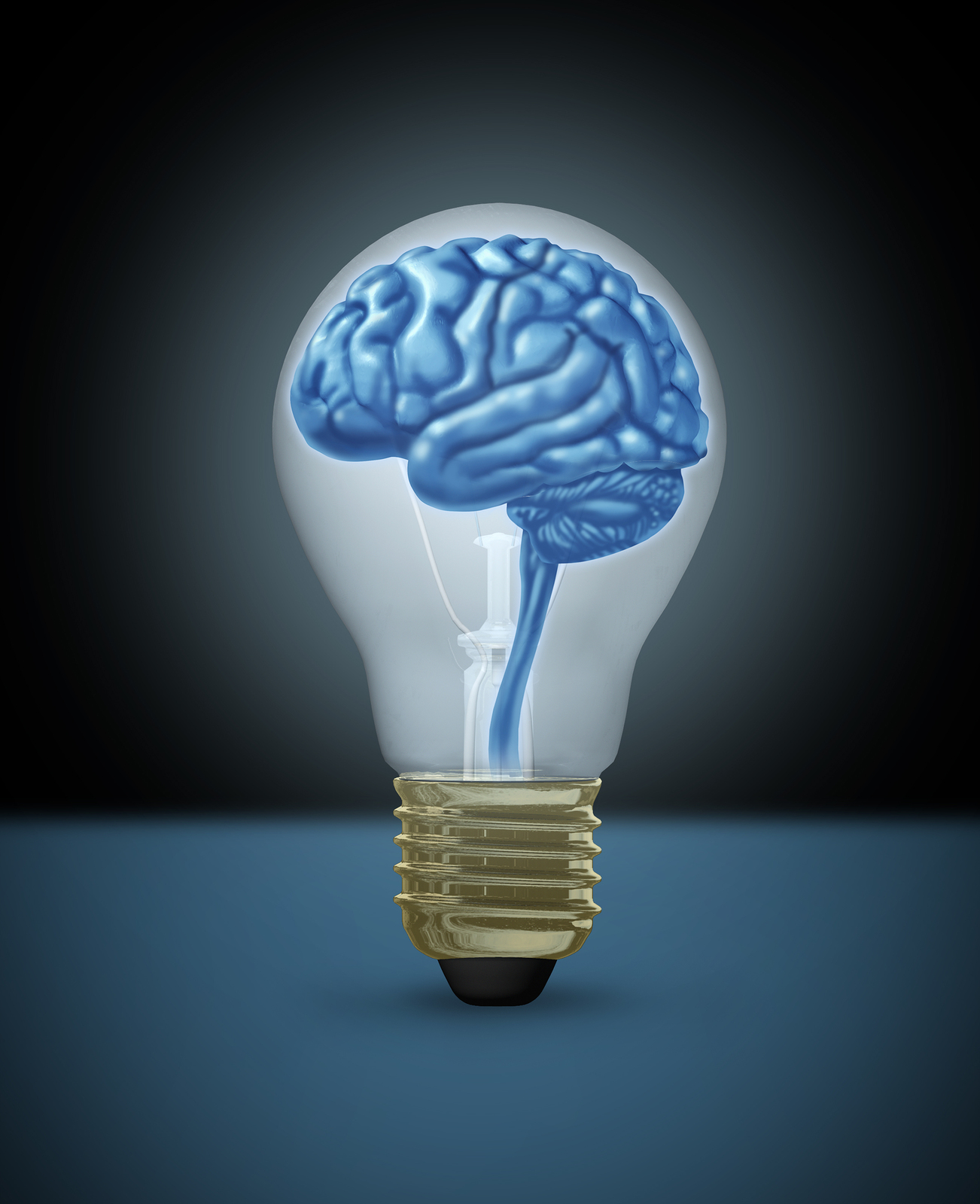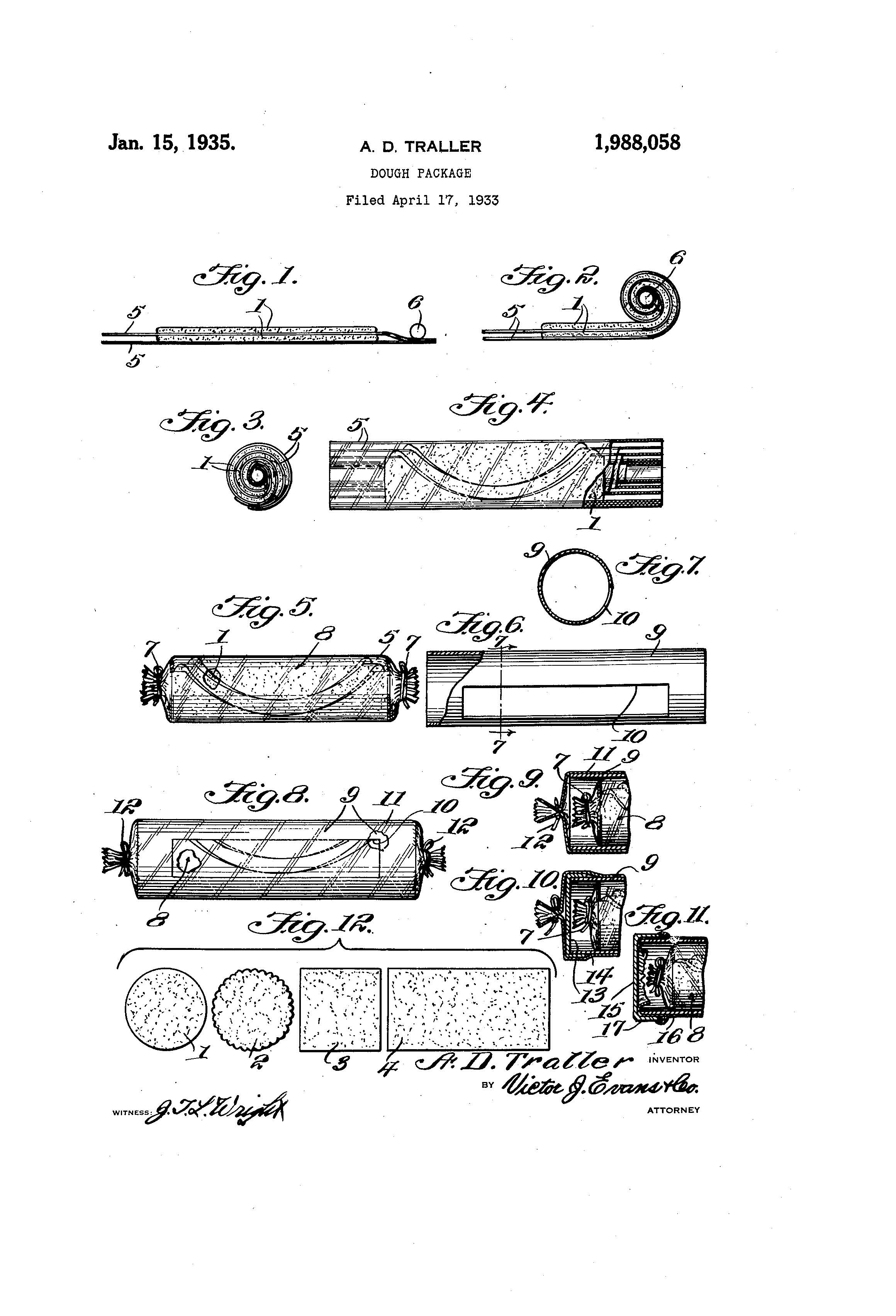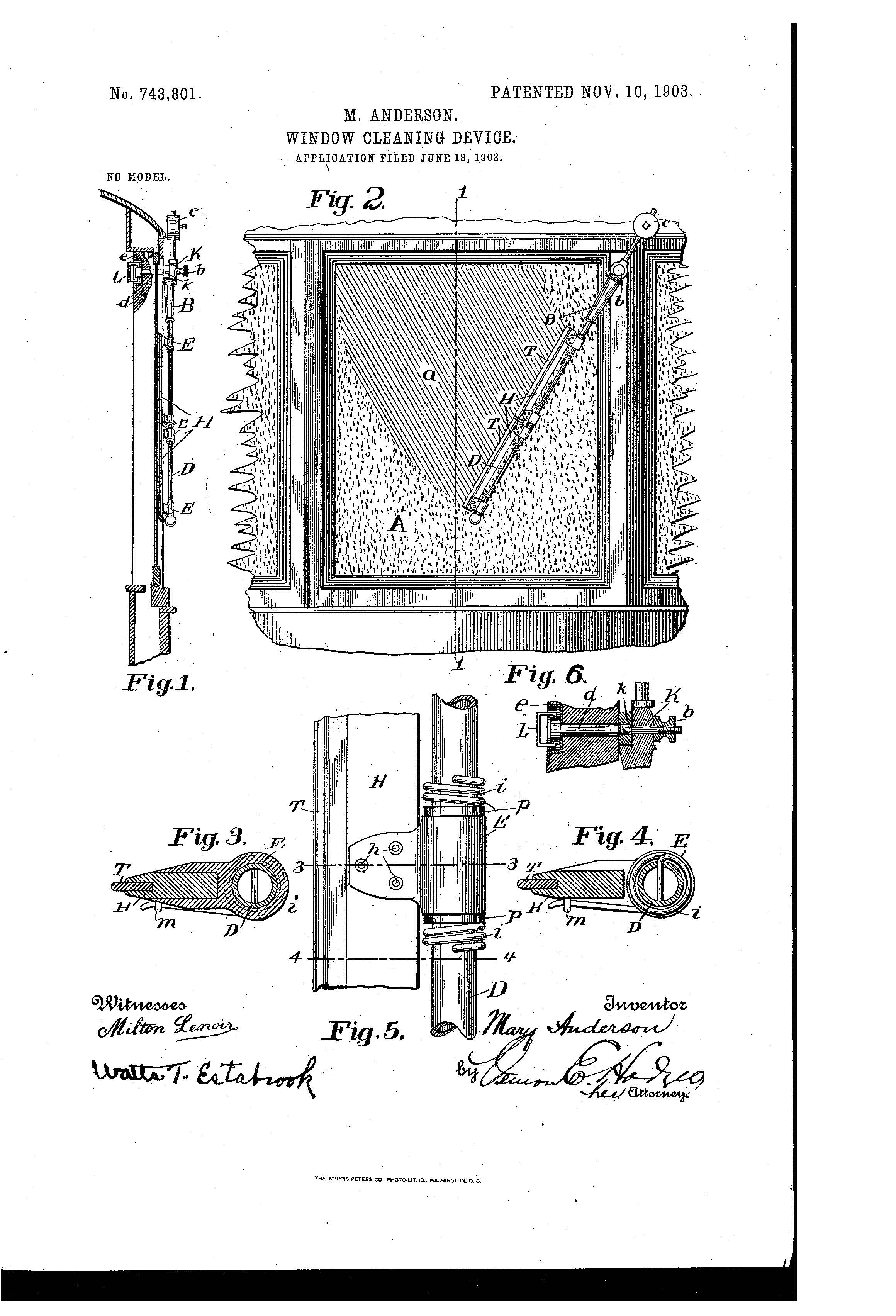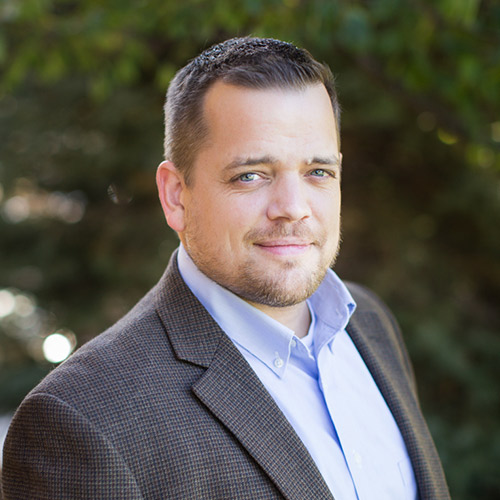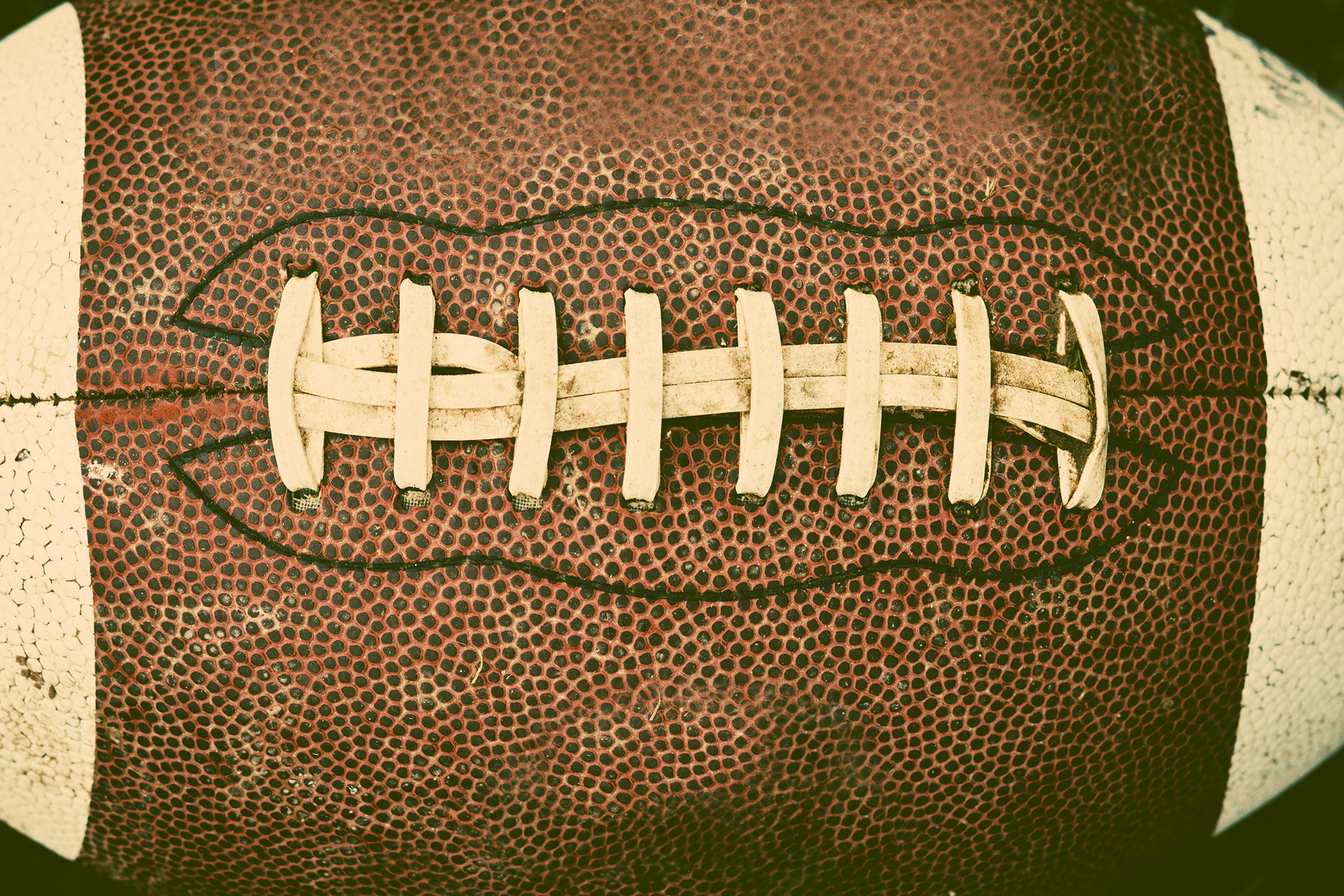Diaper Drive 2017
This holiday season Suiter Swantz IP is proud to help the Lydia House, a division of the Open Door Mission, by collecting diapers for women and children in need. There are over 2,000 people who spend the night homeless in Omaha and 23% of those 2,000 are families with children. Many are faced with the heart breaking decision of choosing between food and diapers for their baby. This is a decision no one should have to make. It is our hope that we can help relieve that burden for these families.
It is easy to get caught up in the holiday hustle and forget those in need so thank you to those who have taken the time to donate in the years past and thank you to those who plan on donating this year. It is greatly appreciated!
If you are planning to donate you can drop your diapers off at our office, 14301 FNB Parkway, Suite 220, Omaha, NE 68154. We will be dropping the diapers off on the 15th of December.
If you have any questions please feel free to call us (402)496-0300
To learn more about the Open Door Mission and the Lydia House click here.
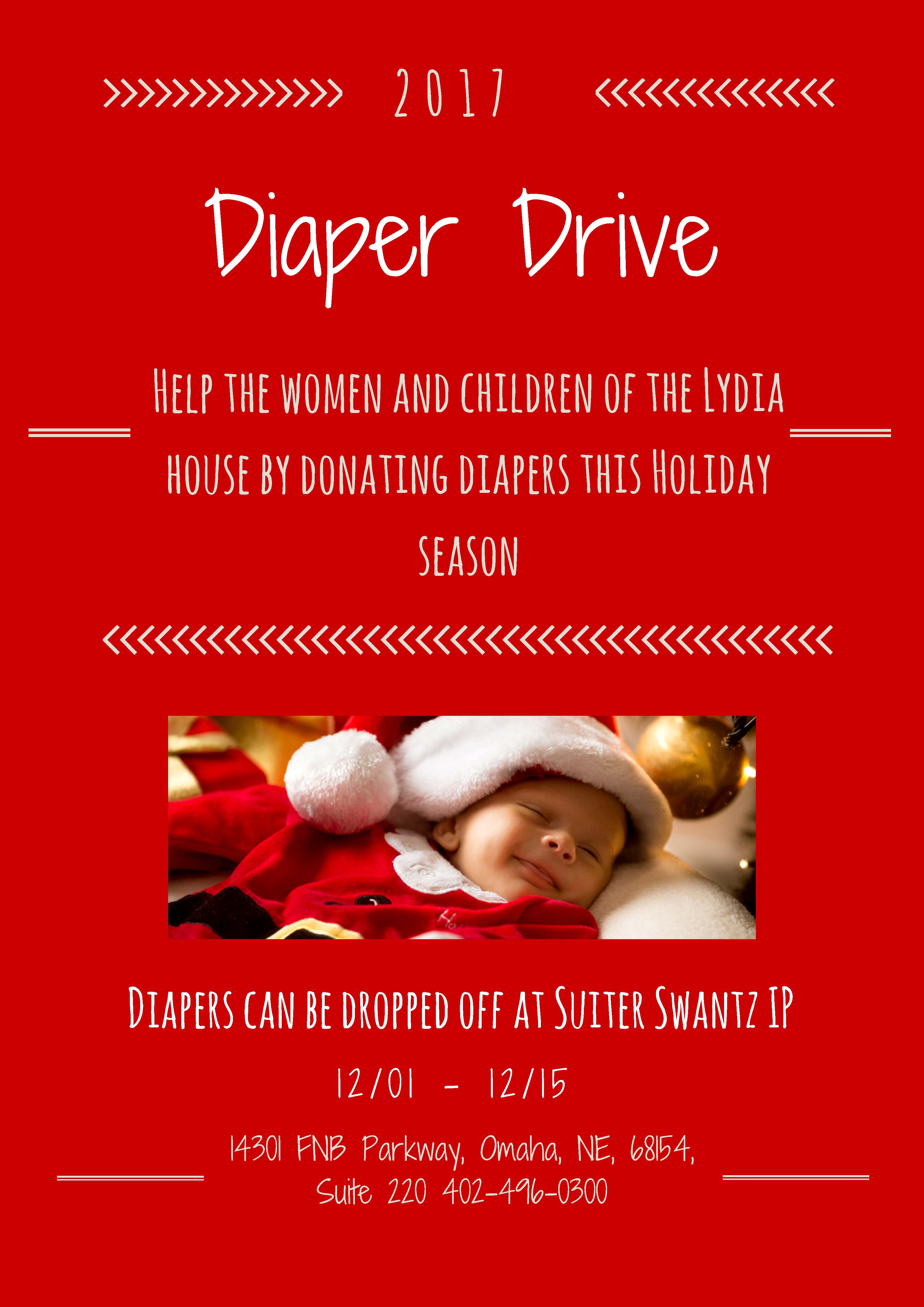
A Thanksgiving Serving of Intellectual Property
Thanksgiving is here once again, a time when family and friends come together and celebrate. Here are a few interesting patents, patent applications, and trademarks to keep in mind before you savor the Thanksgiving meal.
The Turkey
“Remote Controlled Turkey Calling Device” U.S. Patent No. 4,862,625 is designed for hunters who prefer to provide the main course the old-fashioned way. According to the patent application, the hunter uses a remote control to project the call sound. The remote enables the hunter to lure his quarry into his hunting range while remaining out of the bird’s line of sight, and as a result, increasing the probability of catching his prey.
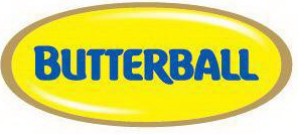 For those who prefer the safe confines of the grocery store, one of the most widely recognized manufacturers of turkeys is Butterball®. Their brand name is protected by a trademark, US Registration No. 1151836.
For those who prefer the safe confines of the grocery store, one of the most widely recognized manufacturers of turkeys is Butterball®. Their brand name is protected by a trademark, US Registration No. 1151836.
Preparation of the Turkey
Frying is the newest method of cooking a turkey. The “Poultry Frying Apparatus” U.S. Patent No. 5,758,569 features a central rod attached to a 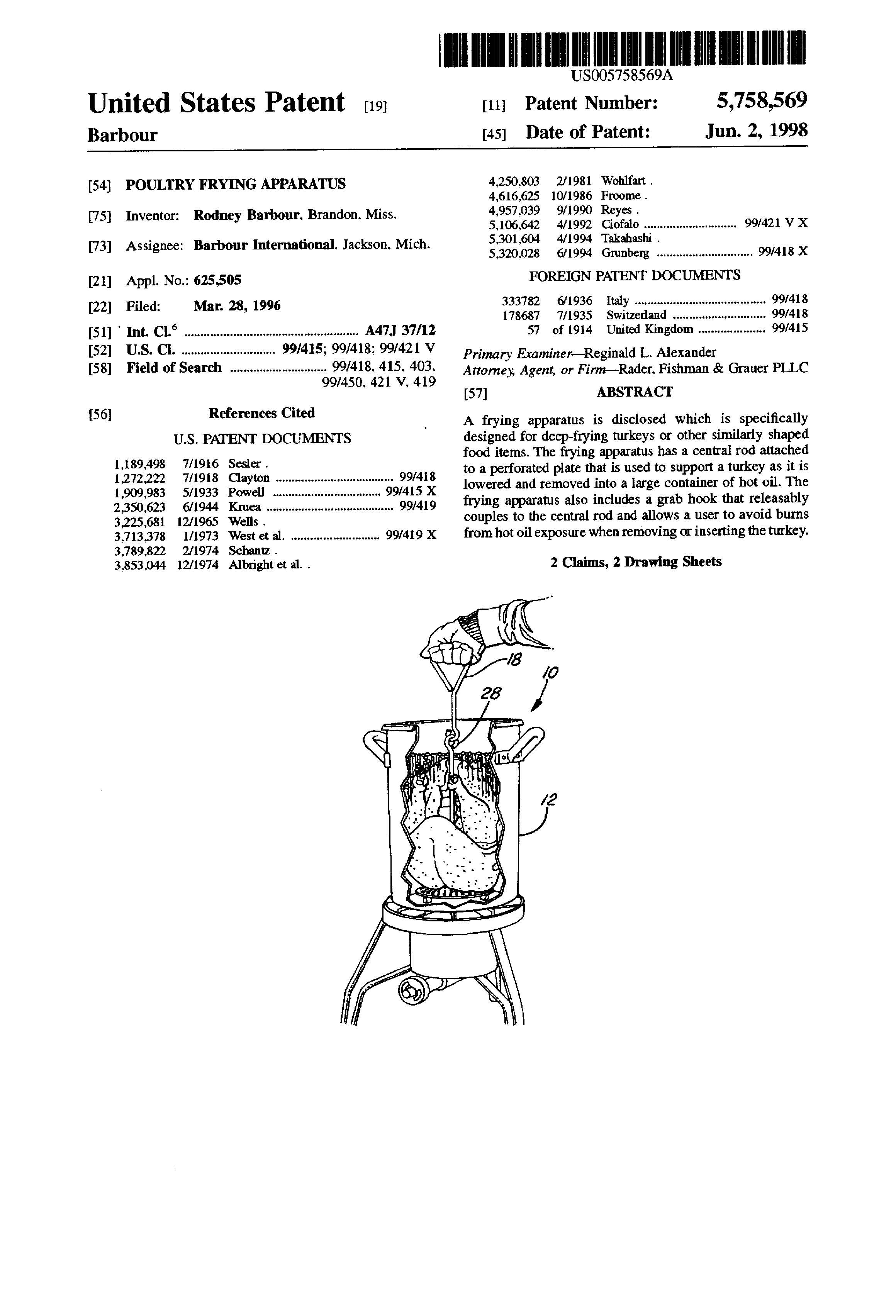 perforated plate that is used to support the turkey as it is lowered and removed into the large container of hot oil. There is also a grab hook to avoid burns from the hot oil when the turkey is removed.
perforated plate that is used to support the turkey as it is lowered and removed into the large container of hot oil. There is also a grab hook to avoid burns from the hot oil when the turkey is removed.
Those who take the more traditional route of roasting a turkey may find the “Turkey and Roast Lifter Sling” U.S. Patent No. 3,784,069 to be helpful. This invention is a simple sling that has a center point and loops to grab on each end. This allows the cook to easily lift and lower the turkey into the roaster. The sling’s material will not cause damage to carving tools; thus, the sling enables the cook to easily dispose of the remains after the turkey is carved.
Carving the Turkey
This can be a very tedious process, inventor Bryan Hirokane, fortunately, came up with a “Process for De-Boning a Turkey”, U.S. Patent No. 6,752,467. This method requires multiple incisions to remove the bones but shortens the cooking time, reduces in space required in the oven, and eliminates the need to carve around the bones when the turkey is ready to be served.
Side Dishes
For sweet potato pie lovers, “Evangeline” is a sweet potato plant patent US PP19,710 that is disease resistant, and possesses a deep orange flesh and a high sucrose content. The high sucrose content makes the potato sweeter, a nice pairing with the marshmallow topping.
The “Machine for Automatic Cutting of Green Beans” US 2008/0295661 simplifies the green bean casserole preparation. The machine cuts off the hard to chew ends of the bean with a sharp blade and disposes them in a receptacle placed on the ends of the machine.
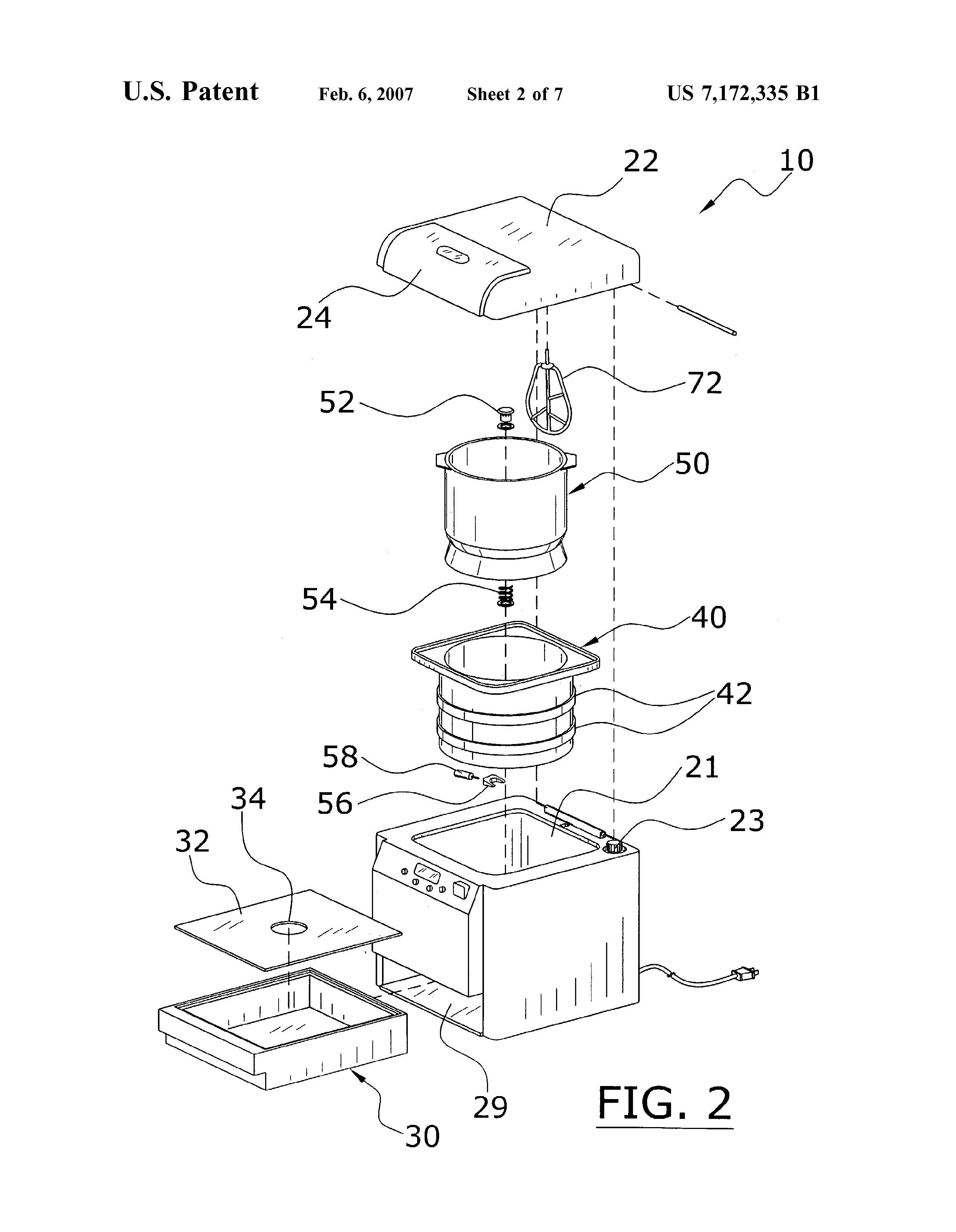 The “Automatic Mashed Potato System” US 7,172,335 cooks, mashes, and seasons potatoes all in one device. The abstract of the patent application describes it as “[a]n automated drain within the mixing container drains the water, then the seasoning unit inputs seasons into the mixing container and the mashing apparatus thereafter mashes the potatoes.”
The “Automatic Mashed Potato System” US 7,172,335 cooks, mashes, and seasons potatoes all in one device. The abstract of the patent application describes it as “[a]n automated drain within the mixing container drains the water, then the seasoning unit inputs seasons into the mixing container and the mashing apparatus thereafter mashes the potatoes.”
The Pie
A “Pie Pan” U.S. Patent No. 1,402,065 is the preferred pie baking tool. This particular pan is a “combination of an outer imperforate pan, shaped like a cake pan, with inner sectional perforate pan, shaped like a pie’ pan and adapted to fit down into the outer pan, the pie pan sections being adapted for easy separation after removal from the outer pan so that the pie or pastry cooked therein can be readily slipped out without breakage.”
The “Dough Package” U.S. Patent No. 1,988,058 can be a big help to those who do not have time to prepare a pie crust from scratch. “This invention relates to preparing and packaging dough for commercial and domestic use, in that the dough is prepared and packed in a sanitary package in a manner whereby it will keep for future use, for a prolonged period of time and can be readily handled and shipped, and sold through stores and the like to the housewife, for the preparation of pastry, biscuits, bread or the like.”
For those who prefer to pick up their pies, the “Automatic Pie Machine” U.S. Patent No. 3,129,674 allows for the mass production of pies. This invention was created to decrease the cost of labor and increase the efficiency of the pie making process. The primary objective of this invention is to “provide an automatic pie making machine which is capable of preparing pies, having upper and lower crusts enclosing filling material, and which eliminates all manual steps and reduces to a bare minimum the amount of human labor necessitated to supervise the operation of the machine.”
Everyone at Suiter Swantz IP would like to wish everyone a safe and happy Thanksgiving.
Suiter Swantz IP is a full-service intellectual property law firm, based in Omaha, NE, serving all of Nebraska, Iowa, and South Dakota. If you have any intellectual property questions or need assistance with any patent, trademark, or copyright matters and would like to speak with one of our patent attorneys please contact us.
Patent of the Week: Traffic Signal
Today in 1923 Garrett Morgan was granted the patent for “Traffic Signal” U.S. Patent No. 1,475,024.
Morgan, a hard worker with an entrepreneurial spirit got his first job at the age of 14. He started out as a handyman and then began repairing sewing machines. He saved enough money to open his own repair shop in 1907 and by 1909 he was able to open a garment shop and it was a big success. By 1920 Morgan had saved enough money to own and operate his own newspaper, the Cleveland Call.
Maneuvering the narrow streets of Cleveland could be quite tedious. The streets were busy with traffic from cars, bicycles, streetcars, and horse-drawn wagons. There was a traffic light system in place but it only had a “stop’ and “go” feature. Morgan noticed those features proved to be somewhat dangerous as they did not provide enough time for drives and pedestrians to react to the changing signal which led to numerous accidents.
Morgan witnessed a significant accident which sparked an idea; a “warning light”. A light that would be in between “stop” and “go” that would give drivers enough time to react. According to the patent application the signal is a “visible indicator which is useful in stopping traffic in all directions before the signal to proceed in any one direction is given. This is advantageous in that vehicles which are partly across the intersecting streets are given time to pass the vehicles, which are waiting to travel in a transverse direction; thus avoiding accidents which frequently occur by reason of the over-anxiety of the waiting drivers, to start as soon as the signal to proceed is given.”
Morgan ended up selling the rights to his invention to General Electric for $40,000.

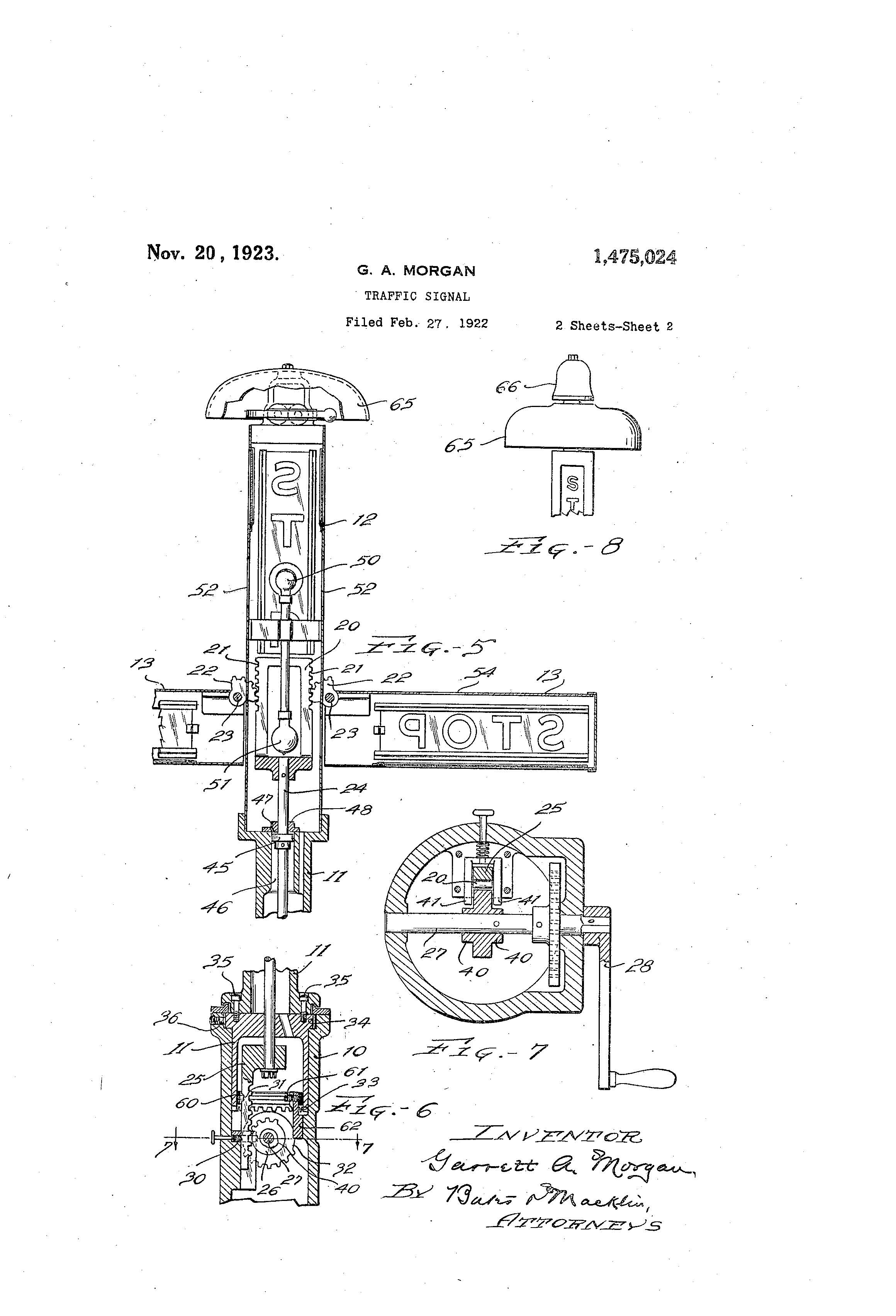
Suiter Swantz IP is a full-service intellectual property law firm, based in Omaha, NE, serving all of Nebraska, Iowa and South Dakota. If you have any intellectual property questions or need assistance with any patent, trademark, or copyright matters and would like to speak to one of our patent attorneys please contact us.
Escobar, Inc. Suing Netflix for Trademark Infringement
The popular Netflix series Narcos details the life of the notorious Columbian drug lord Pablo Escobar and the Escobar family is not happy about it.
Pablo Escobar’s brother, head of hitmen and former accountant, Roberto De Jesus Escobar Gaviria, is the founder of holding company Escobar, Inc. Gaviria is suing Netflix by way of Escobar, Inc. for $1 billion claiming the streaming service used his company's trademarks, which include "all the trademarks to all of our names and also for the Narcos brand," without permission. Gaviria stated the series is full of “mistakes, lies and inaccuracies from the real story…It is depicting me, my life, my family and my brother…I think nobody else in the world is alive to determine the validity of the materials, but me.” Gaviria claimed Netflix has been compensated well from the series and from the trademarks.
On August 20, 2016, Gaviria filed use-based applications with the United States Patent and Trademark Office (USPTO) to register the marks NARCOS and CARTEL WARS. The marks would cover a range of goods and services such as downloadable ring tones, sunglasses, temporary tattoos, etc. Netflix quickly sent a cease and desist letter citing fraudulent rights claims.
Gaviria claims Narcos Productions, LLC (NPL), the company responsible for the hit series, infringed on Escobar Inc.’s trademark rights for the use of NARCOS and CARTEL WARS. Gaviria further claimed his company “used NARCOS in connection with things like 'operating a website' and 'game services provided online from a computer network' since Jan. 31, 1986.” Jill M. Pietrini, attorney for NPL, was quick to point out “the internet had not been developed for widespread consumer use in 1986, nor was the capability to provide audiovisual works nor game services available at that time."
Olof Gustafsson, CEO of Escobar Inc., believes Netflix will reconsider negotiations because "[a]t first, they refused to acknowledge us. After we registered all the trademarks and we've been granted some of them, they sent us a cease-and-desist letter. After that our attorneys and their attorneys have come to an agreement that basically they need to pay us something. Now it's a matter of determining how much that something is. At the end of the day, if we don't take a deal, then we own the trademarks. They would have to rebrand their entire show. They know this. This is why they’re talking to us. Otherwise they would never entertain any discussions with a drug cartel family. "
In an interview with the Hollywood Reporter Gaviria stated he would “close their little show” if Netflix did not come to a settlement agreement with him. "A billion is what we used to make in a good week in the 1980s and 1990s," Gaviria said in 2016. "Apparently money is now growing on trees in favor of Netflix after my show was released. They should pay me immediately."
Netflix declined to comment on this matter.
Suiter Swantz IP is a full-service intellectual property law firm, based in Omaha, NE, serving all of Nebraska, Iowa, and South Dakota. If you have any intellectual property questions or need assistance with any patent, trademark, or copyright matters and would like to speak with one of our patent attorneys please contact us.
BrainStorm Expands NurOwn Therapy’s Patent Coverage
The United States Patent and Trademark Office (USPTO) granted BrainStorm Cell Therapeutics Inc., a biotechnology company based in the United States and Israel, a Notice of Allowance for their newest patent. “We continue to protect our technology through strategic intellectual property achievements and this Notice of Allowance from the USPTO is a welcome addition to our IP portfolio,” announced CEO of BrainStorm, Chaim Lebovits (www.bizjournals.com). This patent application, “Isolated Cells and Populations Comprising Same for the Treatment of CNS Diseases,” Patent Publication No. US 20140154222, involves a cell therapy which utilizes mesenchymal stem cells (MSCs), found throughout the body, especially in the bone marrow and fat tissue, to treat neurodegenerative disorders such as Parkinson’s disease, ALS (amyotrophic lateral sclerosis), multiple sclerosis, and sciatic nerve injury (alsnewstoday.com).
BrainStorm owns NurOwn, the patented cell therapy technology which grows MCSs in proprietary laboratories to convert the MSCs into neurotrophic factors (NTFs). NTFs are vital components in the survival, differentiation, and growth of neurons in the body, even in conditions altered by neurodegenerative diseases (www.brainstorm-cell.com). MSCs also protect neurons from toxic damage (alsnewstoday.com). When precursor MSCs signal molecules, NTFs are secreted. The MSC-NTF cells produce numerous NTFs, such as Glial Derived Neurotrophic Factor (GDNF), Brain Derived Neurotrophic Factor (BDNF), Vascular Endothelial Growth Factor (VEGF), and Hepatocyte Growth Factor (HGF), which aid in the treatment of neurodegenerative diseases (www.brainstorm-cell.com). According to the patent application, BrainStorm claims that the new NurOwn patent will cover “[a] non-genetically modified isolated human cell which expresses CD90, expresses glial fibrillary acidic protein (GFAP) and secretes at least one neurotrophic factor, wherein a secretion of said neurotrophic factor is at least 2 times greater than a basal secretion of said neurotrophic factor in a non-differentiated mesenchymal stem cell.”
In the earlier stages of developing the technology covered in the patent application, BrainStorm formulated two clinical trials which improved patients’ respiratory capacity, muscle strength, and functional capacity (alsnewstoday.com). On their website, BrainStorm outlines the NurOwn production process, which evolved from the clinical trials. To begin, autologous bone marrow is extracted from the patient. BrainStorm ensures that the bone barrow aspiration process is routine, safe, brief, and conducted while the patient is under anesthesia at a hospital. The bone marrow is then sent to a NurOwn laboratory. After two to three weeks at the manufacturing facility where the MSCs are separated from the other cells in the bone marrow, the MSCs isolate and grow ex vivo into MSC-NTF cells. Thanks to the soon-to-be patented conditions, the cells are induced to produce higher levels of neurotrophic factors. When the MSC-NTFs are ready, BrainStorm collects the cells in syringes and sends them to the patient for administration (www.brainstorm-cell.com).
BrainStorm Cell Therapeutics Inc. engages in unprecedented adult stem cell therapies (www.bizjournals.com). NurOwn was developed by Professor Dani Offen and the late Professor Elad Melamed of Tel Aviv University, Israel’s largest university (Tel Aviv Unversity.com). Approximately 70 patients with ALS have received NurOwn in clinical trials performed in the United States and Israel (www.bizjournals.com), which has established NurOwn as safe and promising to those with neurodegenerative diseases (www.brainstorm-cell.com). BrainStorm claims to not use antibiotics or animal-derived products such as fetal calf serum (www.brainstorm-cell.com). According to BrainStorm’s website, the company has numerous manufacturing initiatives in process to make NurOwn more cost-effective and efficient.
The USPTO considers this patent pending until BrainStorm pays the necessary patent issue fees, and the final patent processes are completed.
Suiter Swantz IP is a full-service intellectual property law firm, based in Omaha, NE, serving all of Nebraska, Iowa, and South Dakota. If you have any intellectual property questions or need assistance with any patent, trademark, or copyright matters and would like to speak to one of our patent attorneys please contact us.
Patent of the Week: Dough Package
Thanksgiving is almost here and for many what they will bring or have to eat is a big part of the day. For most, the turkey tends to be the main focus of the meal but, for others, it is all about the desserts. One staple at almost all Thanksgiving gatherings is pie. Baking a pie can be quite tedious, you have to make the crust, the filling, bake it just right and hope against hope everything came together.
Alvord D. Traller found a way to make that process a little easier with his DOUGH PACKAGE (U.S. Patent No. 1,988,058). According to the patent, granted in 1935: This invention relates to preparing and packaging dough for commercial and domestic use, in that the dough is prepared and packed in a sanitary package in a manner whereby it will keep for future use, for a prolonged period of time and can be readily handled and shipped, and sold through stores and the like to the housewife, for the preparation of pastry, biscuits, bread or the like, with the result the trouble of mixing ingredients in providing the dough for the articles mentioned is dispensed with by the housewife.

Suiter Swantz IP is a full-service intellectual property law firm, based in Omaha, NE, serving all of Nebraska, Iowa and South Dakota. If you have any intellectual property questions or need assistance with any patent, trademark, or copyright matters and would like to speak to one of our patent attorneys please contact us.
Today in History Mary Anderson was Granted Patent for Windshield Wiper
On this day in 1903, Mary Anderson was granted a patent for a WINDOW CLEANING DEVICE (U.S. Patent No. 743,801), the first windshield wiper.
Anderson got the idea for the wiper when she was riding on a streetcar in New York City. She noticed the driver was unable to see out of the window due to the amount of sleet that had hardened on it. The streetcar was designed for inclement weather but it was not an ideal situation for the driver or passengers sitting in the front. The window was split into sections so it could be opened if visibility was poor. This, unfortunately, exposed the driver and passengers to the elements.
Anderson sketched her wiper idea out right then and there. After a few unsuccessful attempts Anderson was able to successfully create a prototype that worked. The wipers were made of wooden arms and rubber that was attached to a lever near the steering wheel of the driver. When the lever was pulled a spring-loaded arm would drag across the window clearing any debris in its way.
Unfortunately, for Anderson, her patent expired before the popularity of the windshield wiper took hold. At the time she presented it people believed the wipers would be a distraction for the driver and cause accidents.
Suiter Swantz IP is a full-service intellectual property law firm, based in Omaha, NE, serving all of Nebraska, Iowa and South Dakota. If you have any intellectual property questions or need assistance with any patent, trademark, or copyright matters and would like to speak to one of our patent attorneys please contact us.
Matt Poulsen to Judge 3-2-1 Quick Pitch Competition
Suiter Swantz IP's Matt Poulsen will be a judge at the University of Nebraska–Lincoln Center for Entrepreneurship's ninth annual 3-2-1 Quick Pitch competition.
The competition is divided into three divisions, which are Nebraska high school students, local community college students and University of Nebraska–Lincoln students. Participants have three minutes to pitch their proposal for a new business venture to a panel of entrepreneurial experts. Students are judged on their creativity, innovation and presentation skills and receive valuable feedback from highly respected professionals.
The event is from 3 to 6 p.m. Nov. 10, at the Memorial Stadium Club Level Suites inside the west entrance. If you are interested in attending RSVP online here.
Patent of the Week: Electrically Heated Garment
With winter on the horizon it is hard not to think about the cold temperatures that will soon be here. There have been many inventions to ward off the cold but the ELECTRICALLY HEATED GARMENT (U.S. Patent No. 5,032,705) may be a one stop shop for cold gear needs.
This invention is described as an electrically heated cold weather garment. It includes a lightweight, stretchable, form-fitting fabric for covering portions of the body of a wearer of the garment; a plurality of flexible, electrical heating wires cover stitched to the fabric by sewing; an electronic controller for controlling current flowing through each of the heating wires.
One issue that plagued inventors when creating electrically heated garments was the fact that the garment distributed heat to all areas of the body at the same rate. Unfortunately, certain parts of the body do not lose heat at the same rate. This electrically heated garment addressed that issue and regulated the flow of heat based on a measured temperature of each part of the body. Kevin Brekkestran, one of the inventors stated the key to this, “is a control device that measures the resistance in wires going to different places, which provides a basis for calculating the temperature in each part of the body.”
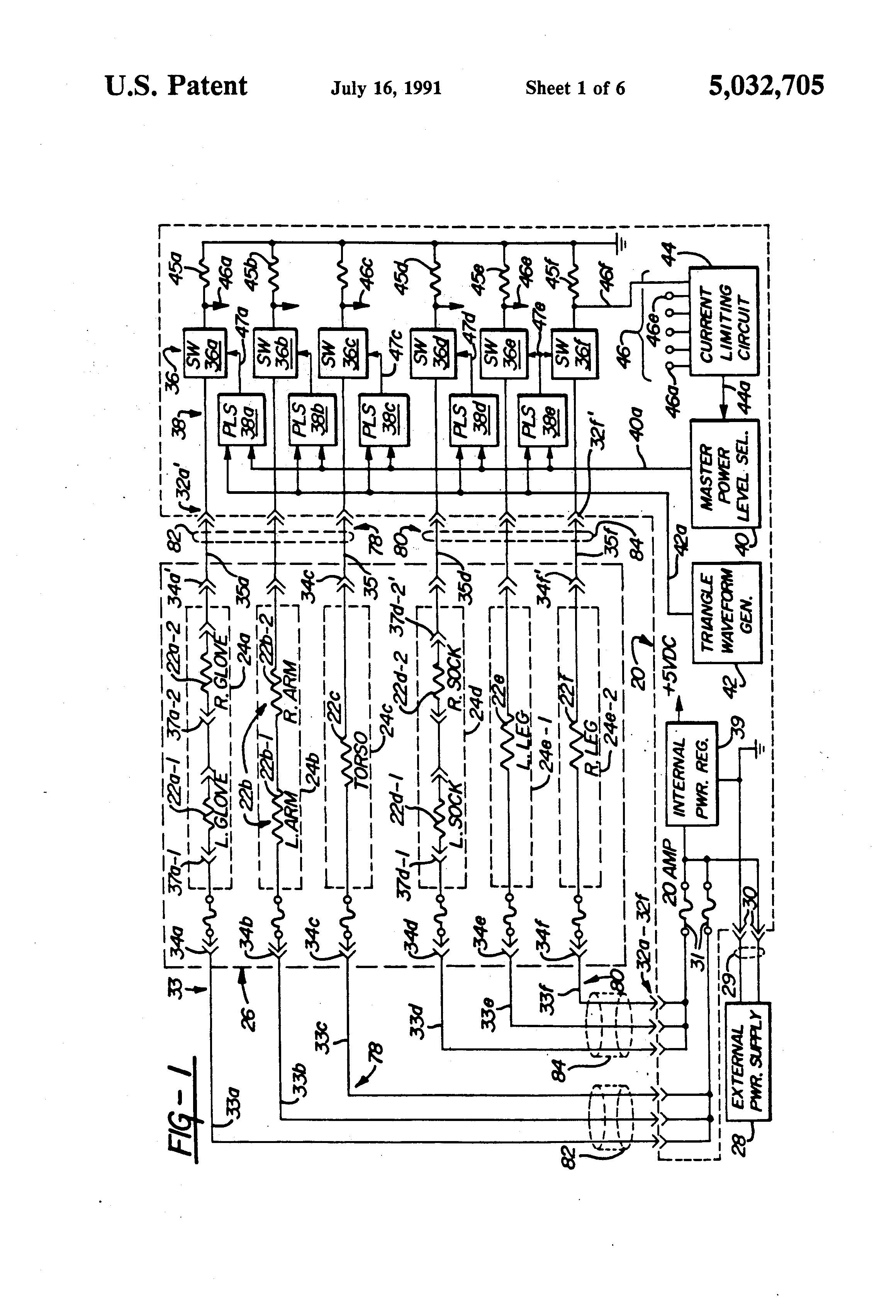
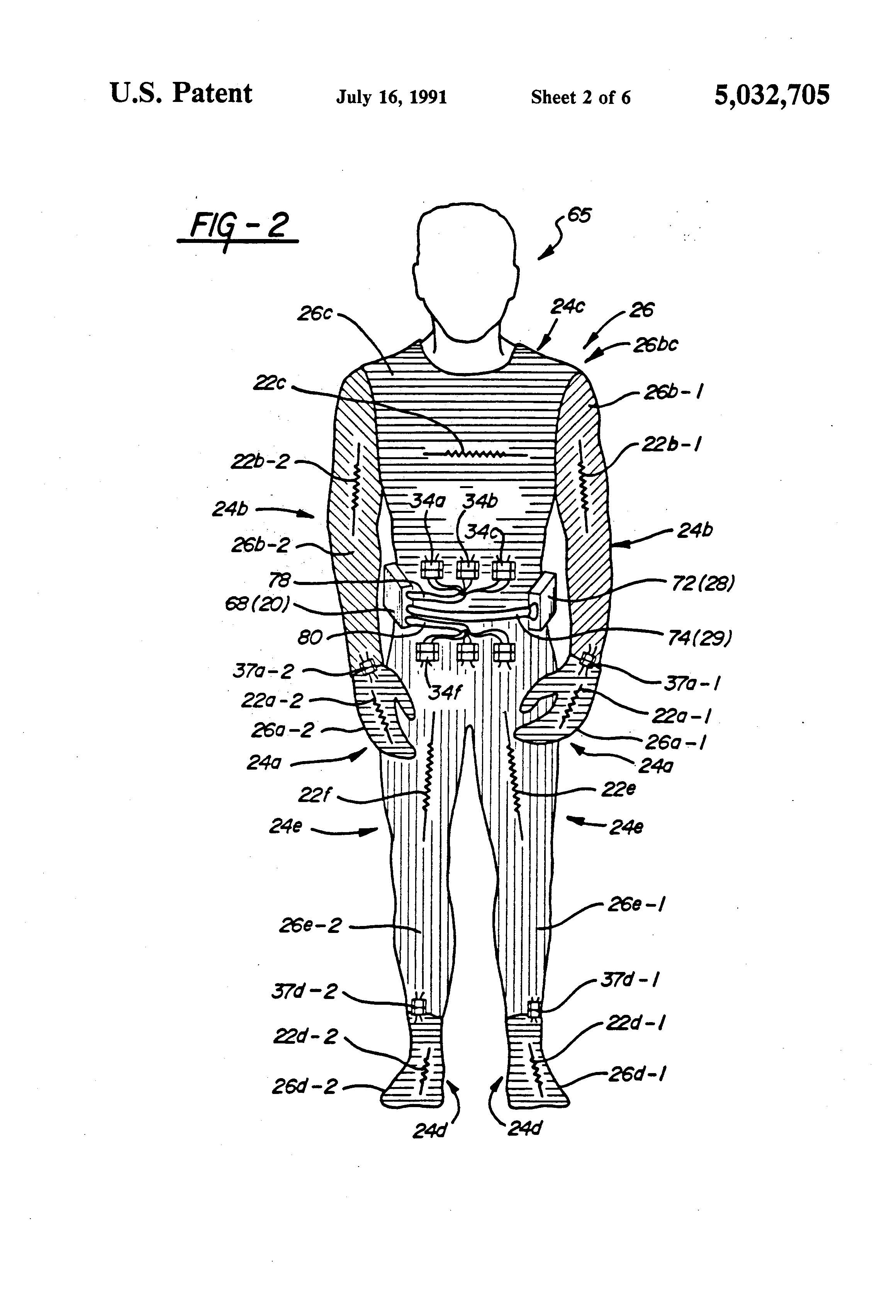

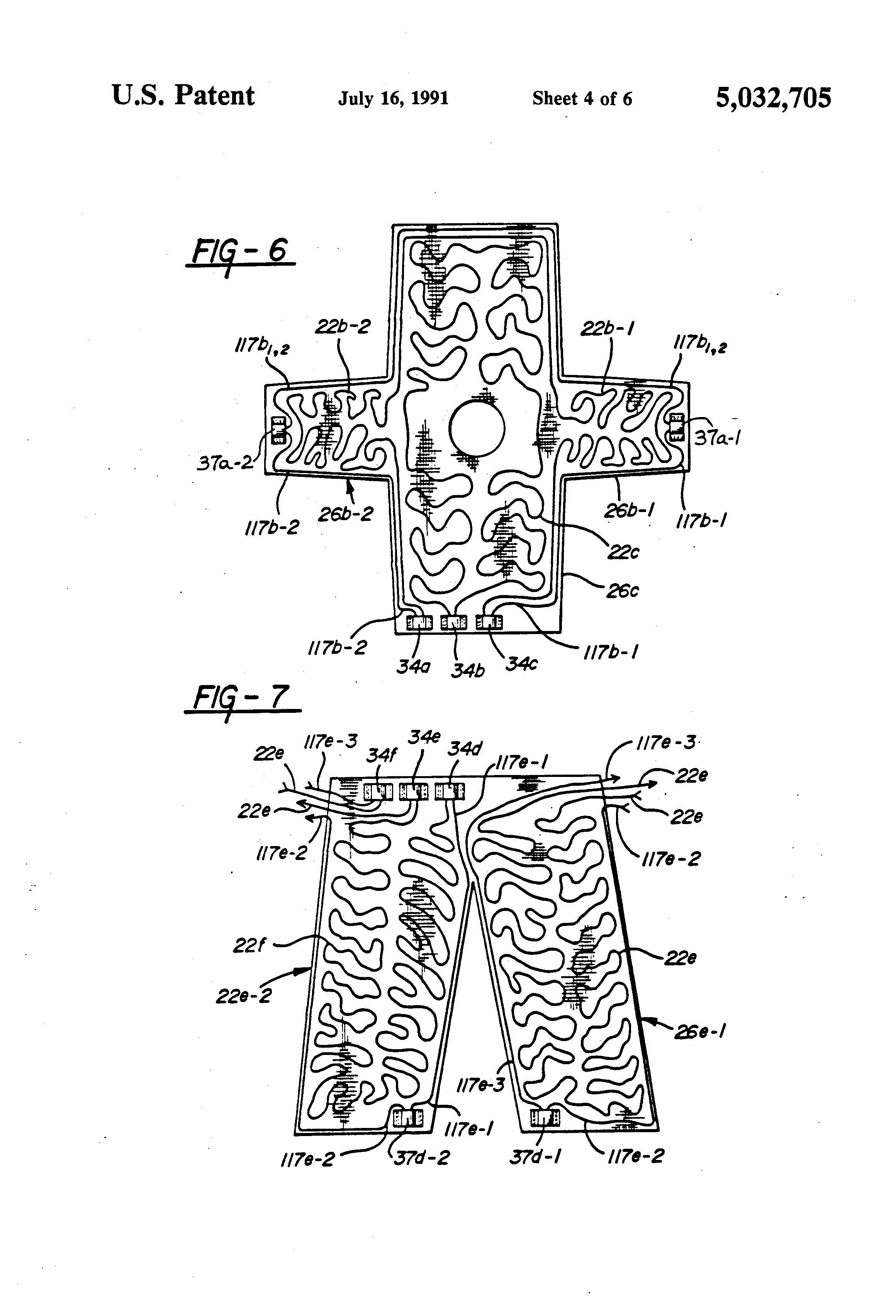
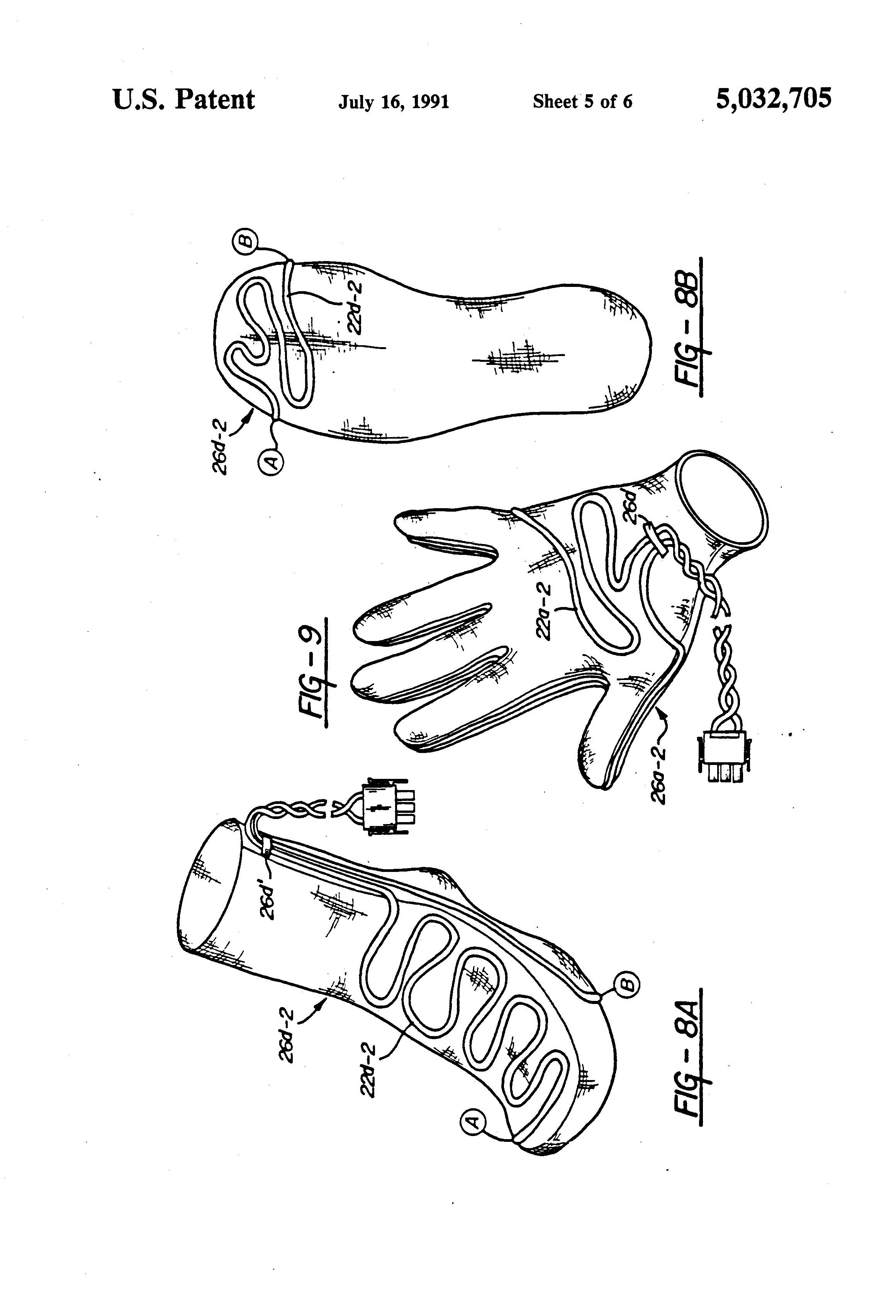
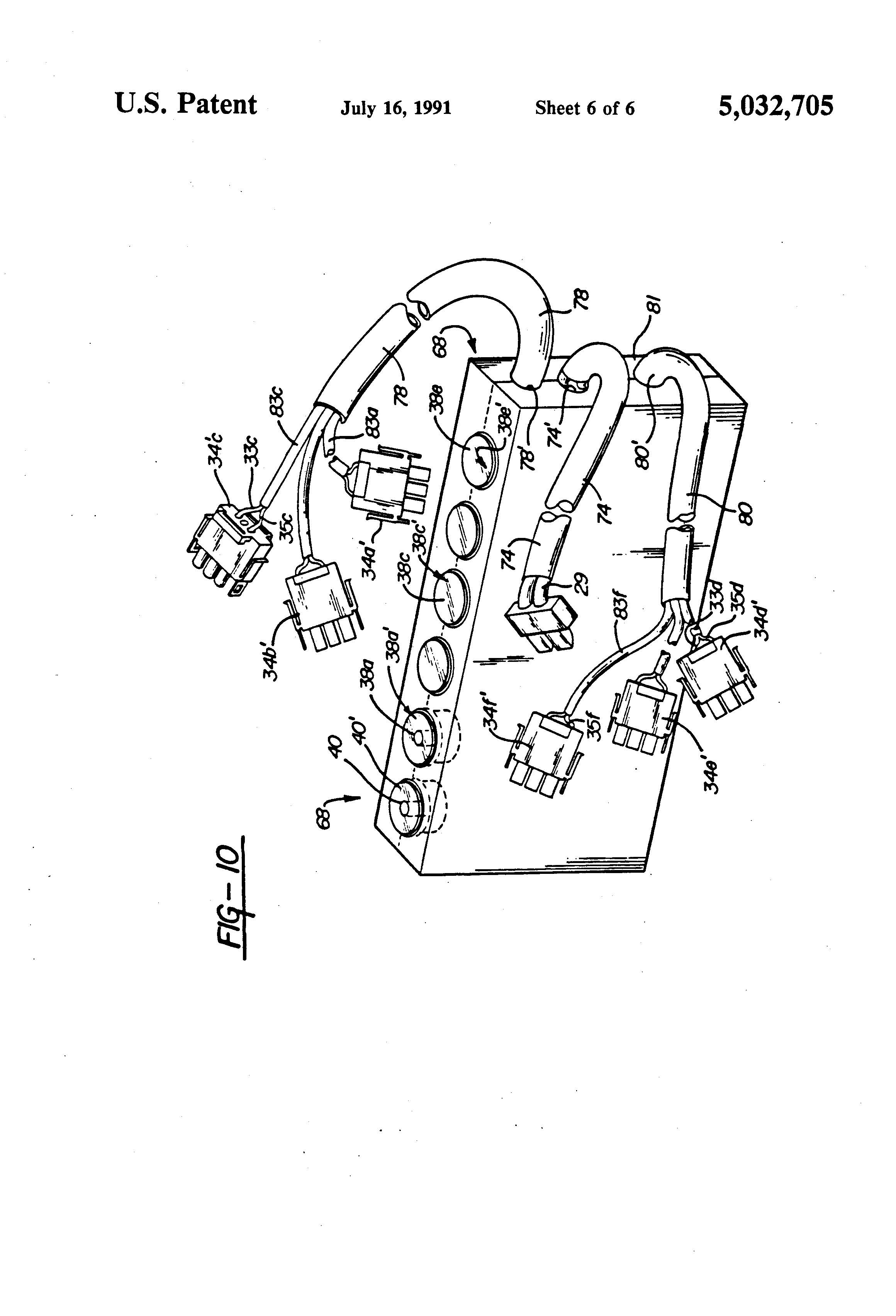
Suiter Swantz IP is a full-service intellectual property law firm, based in Omaha, NE, serving all of Nebraska, Iowa and South Dakota. If you have any intellectual property questions or need assistance with any patent, trademark, or copyrightmatters and would like to speak to one of our patent attorneys please contact us.
Halloween Patent: Bat-Like Decorative Object
This BAT-LIKE DECORATIVE OBJECT, U.S. Patent No. 5,285,898, was granted on February 15, 1994. Bats are a Halloween staple and this one is sure to add a little fright to the night. It is described as a decorative combination structure comprising a combination of a flexible bag member and a flexible sheet which together simulate a fanciful conception of the appearance of a giant bat.
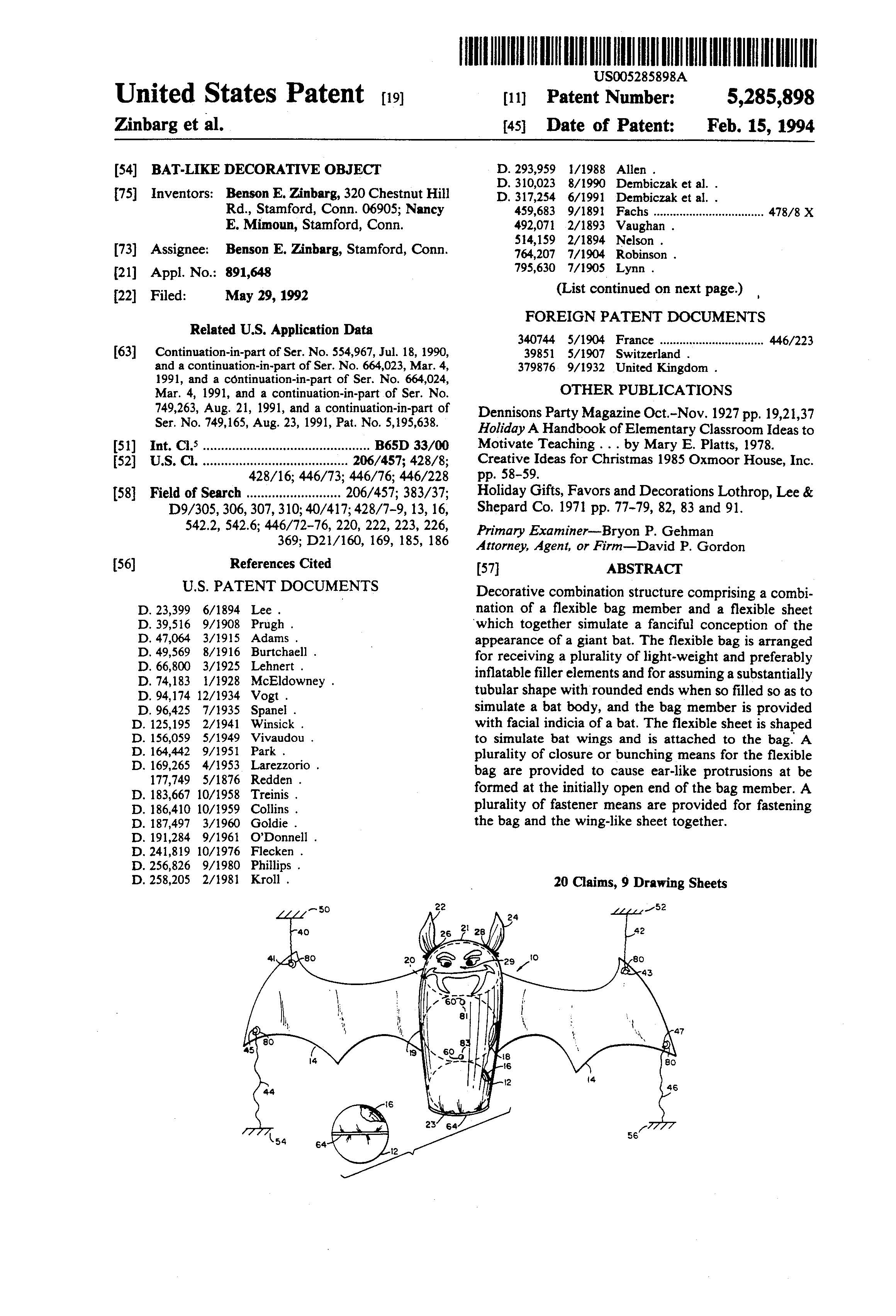
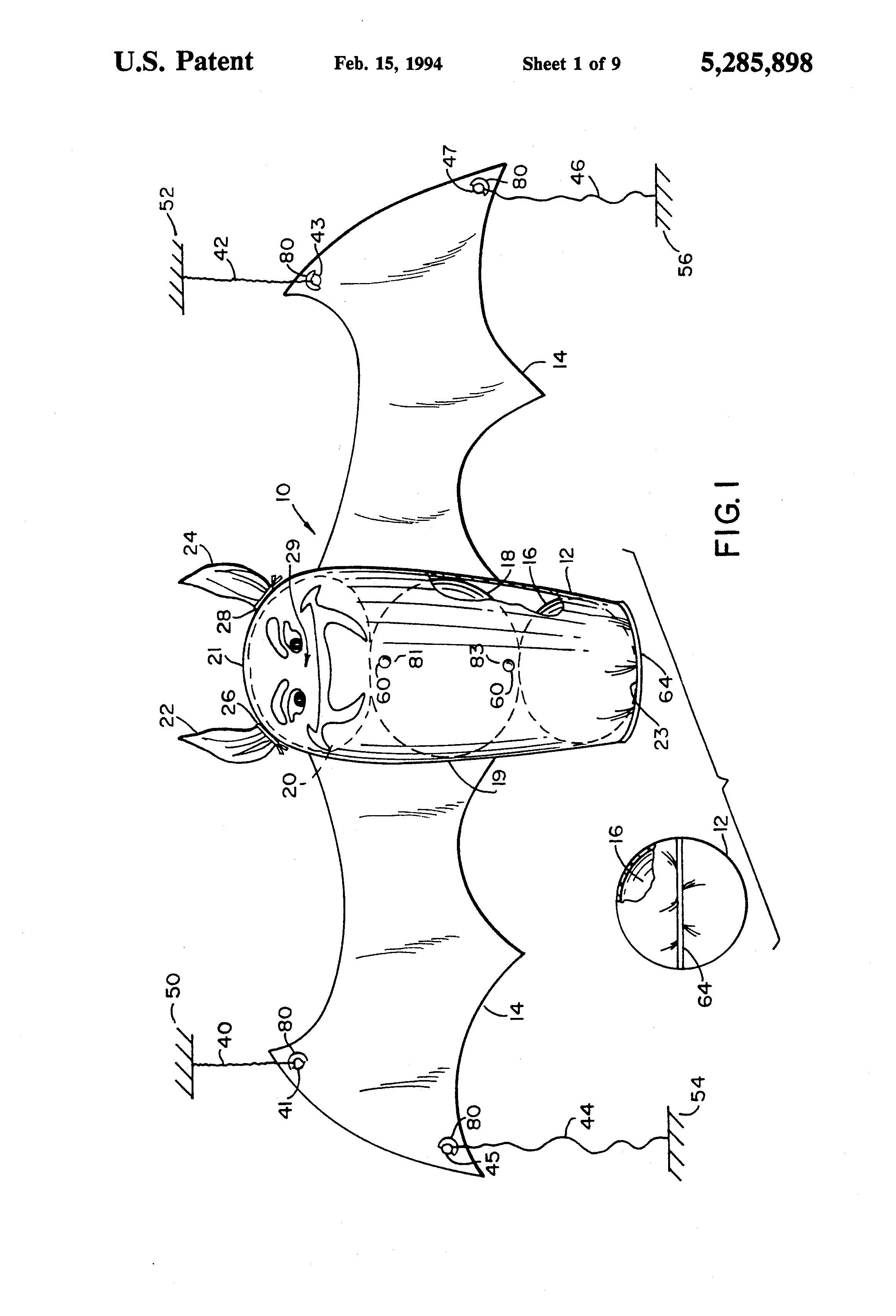
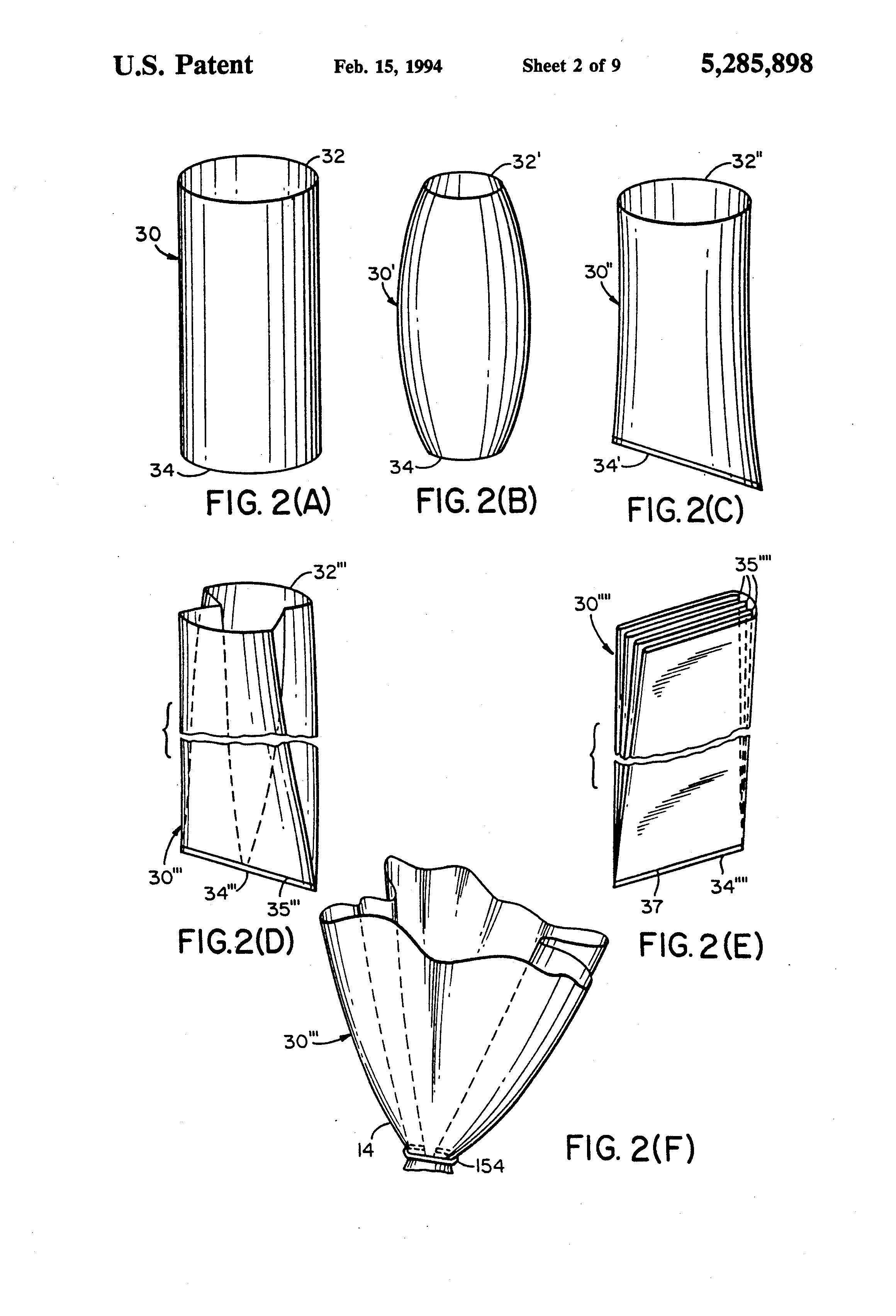

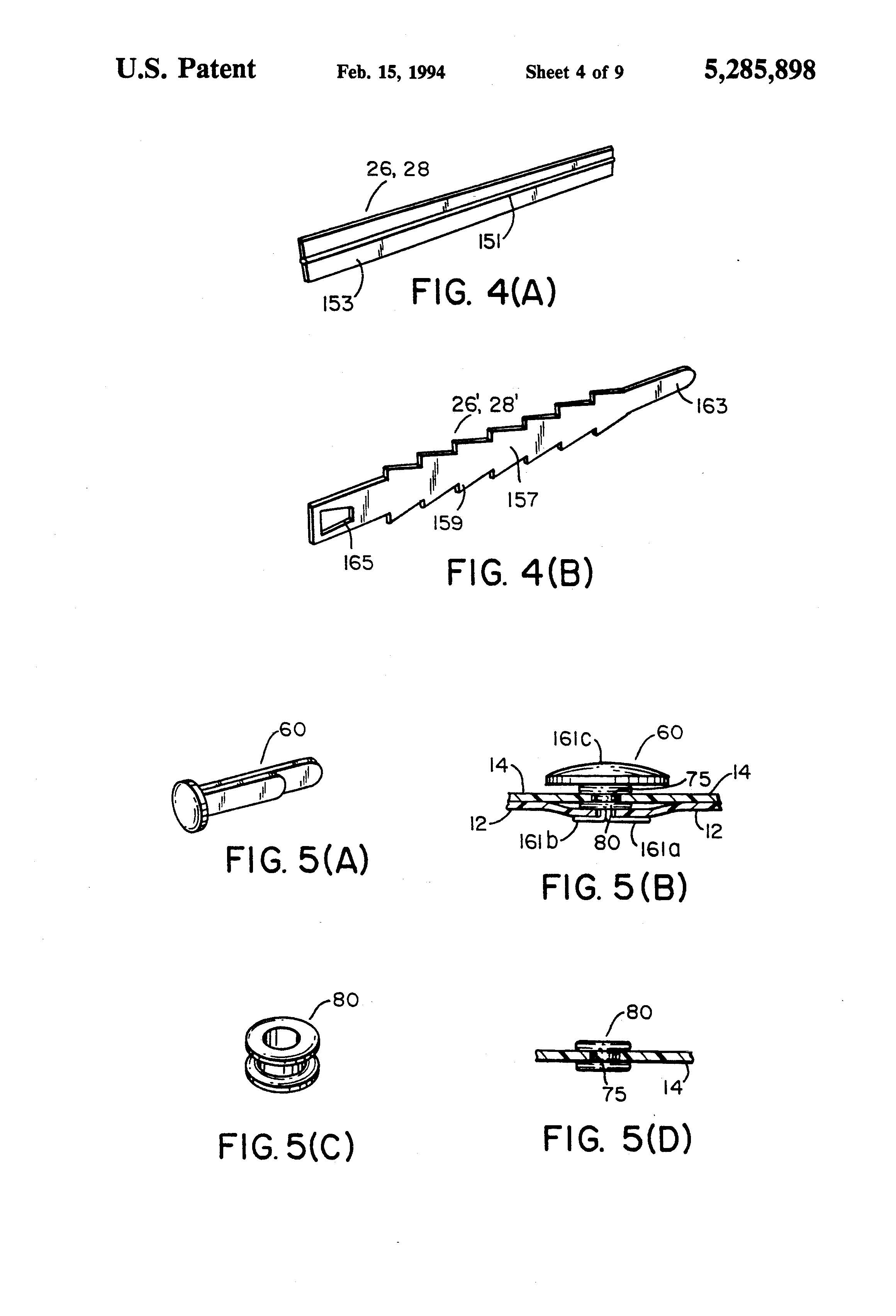
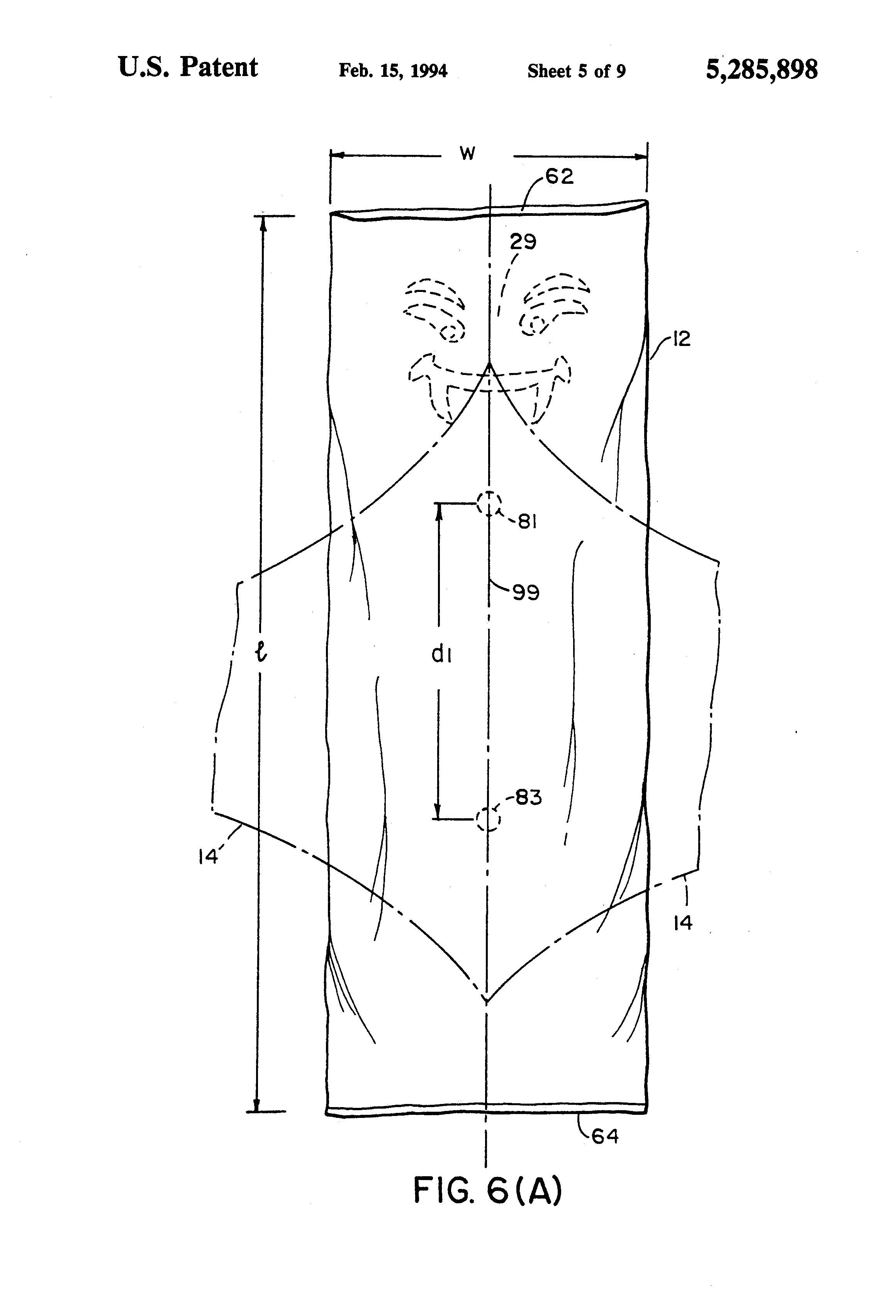
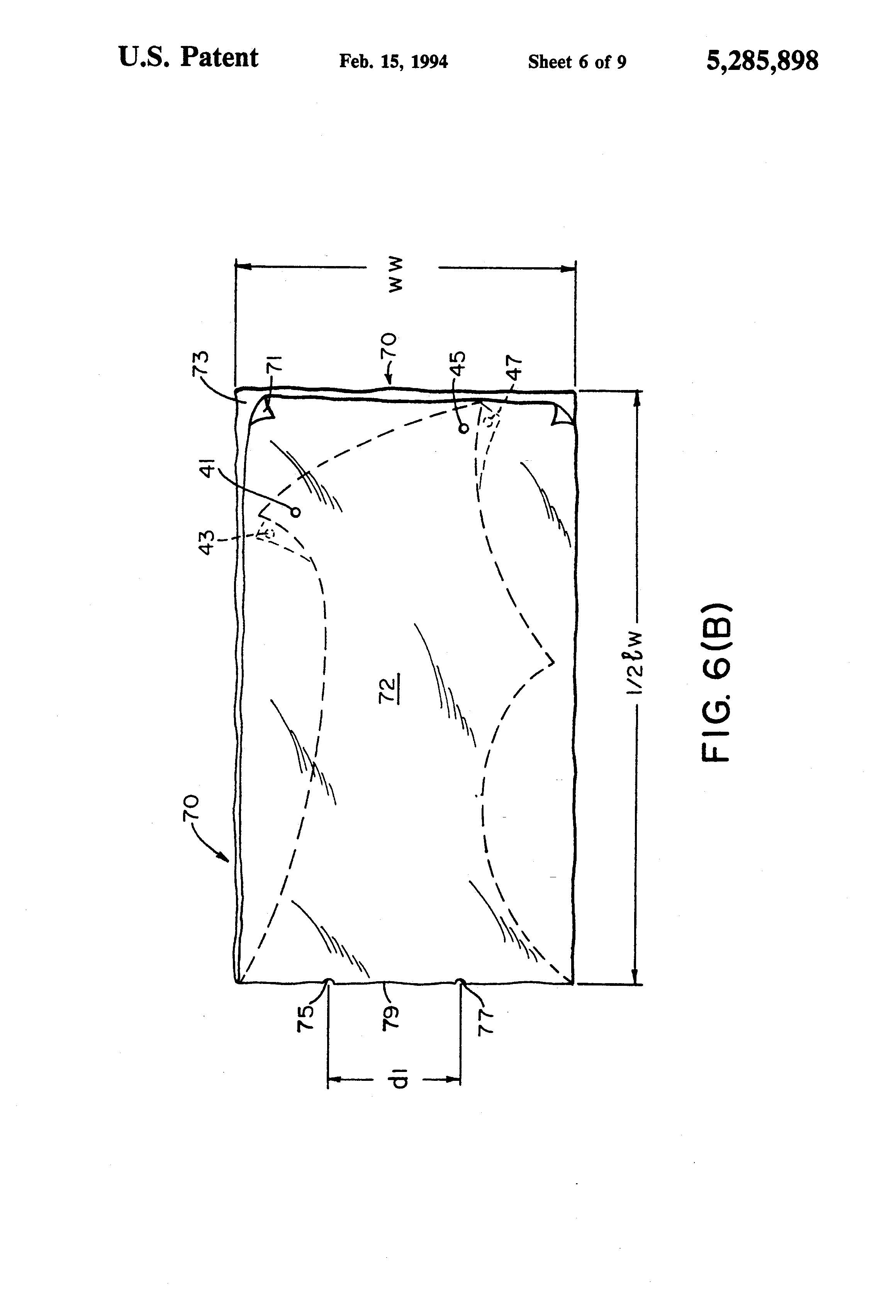
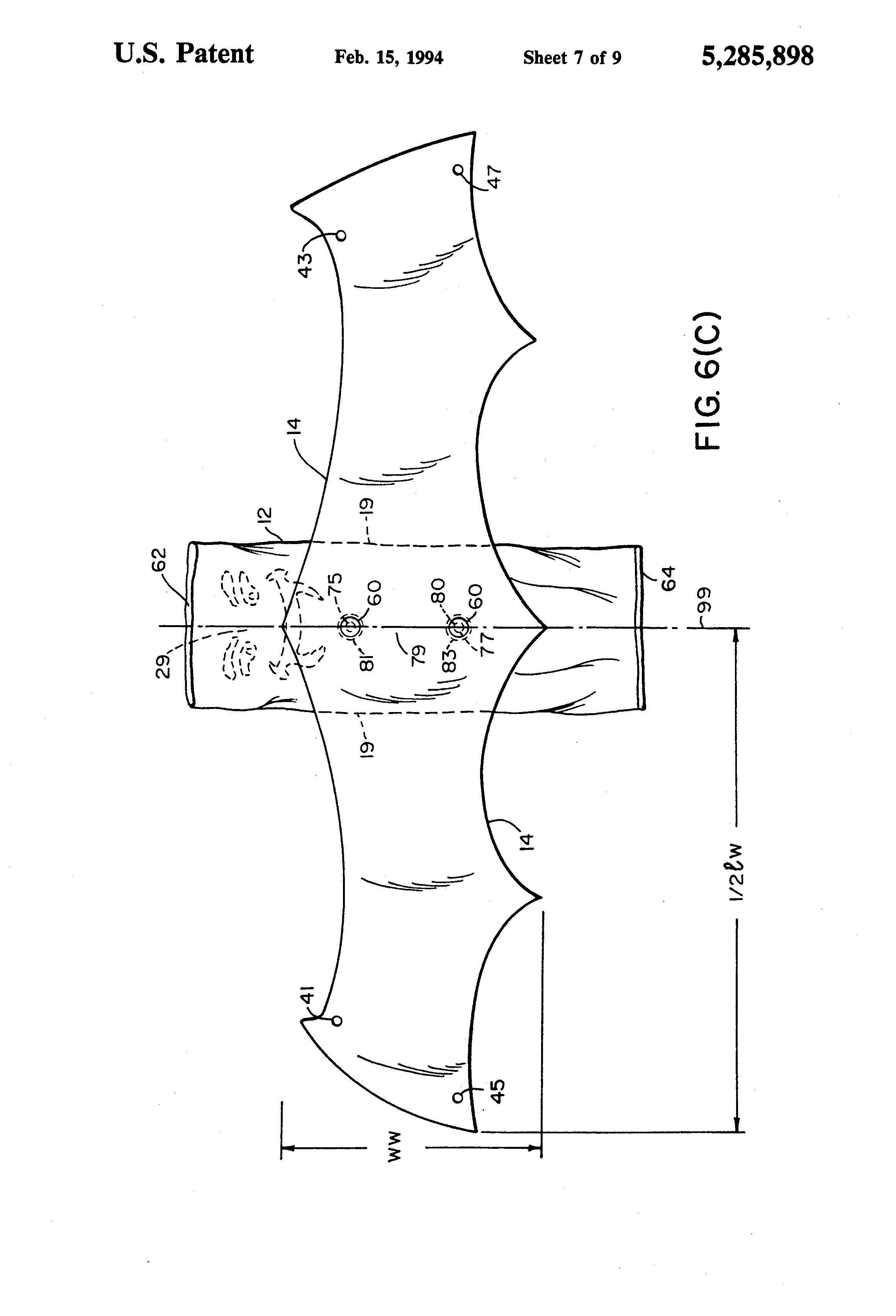
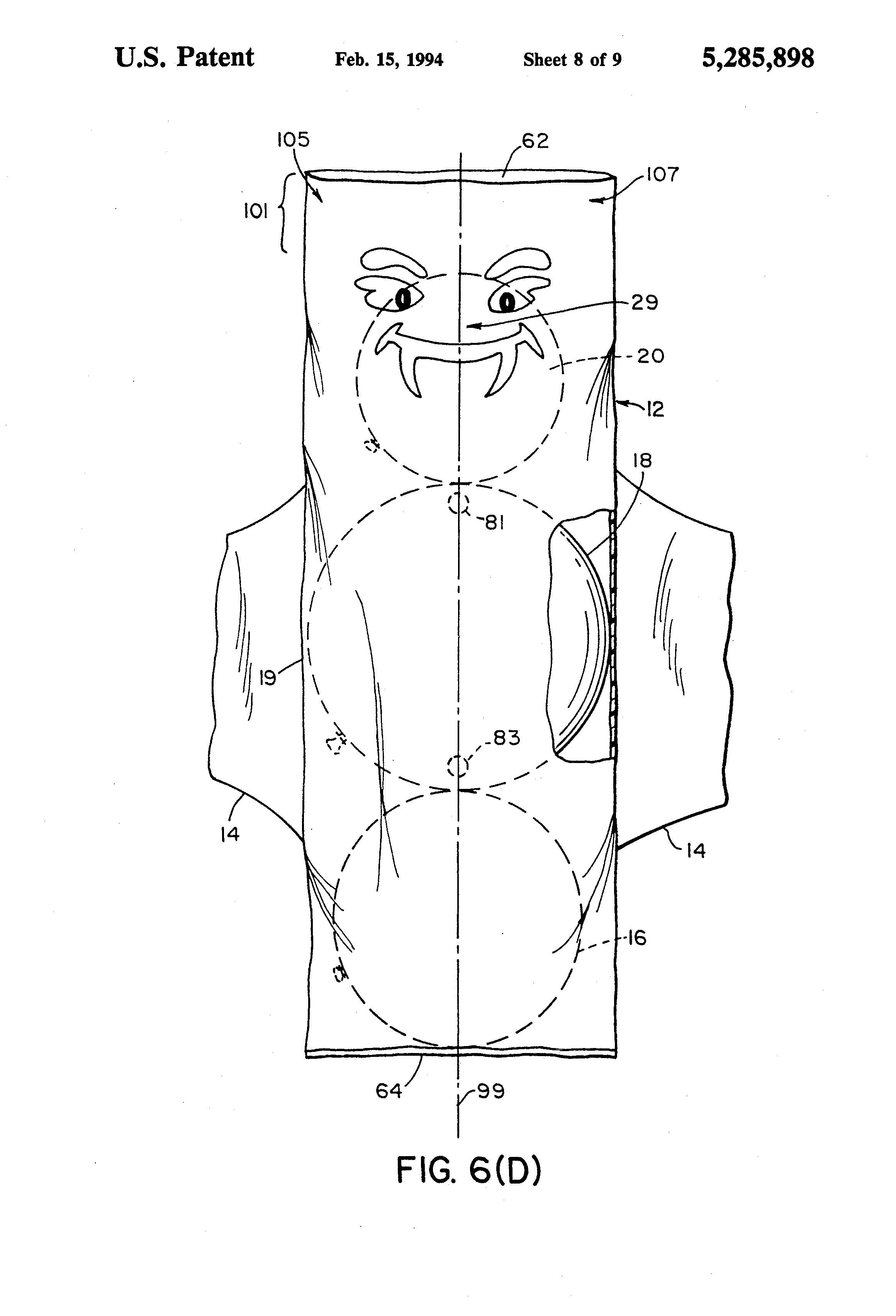
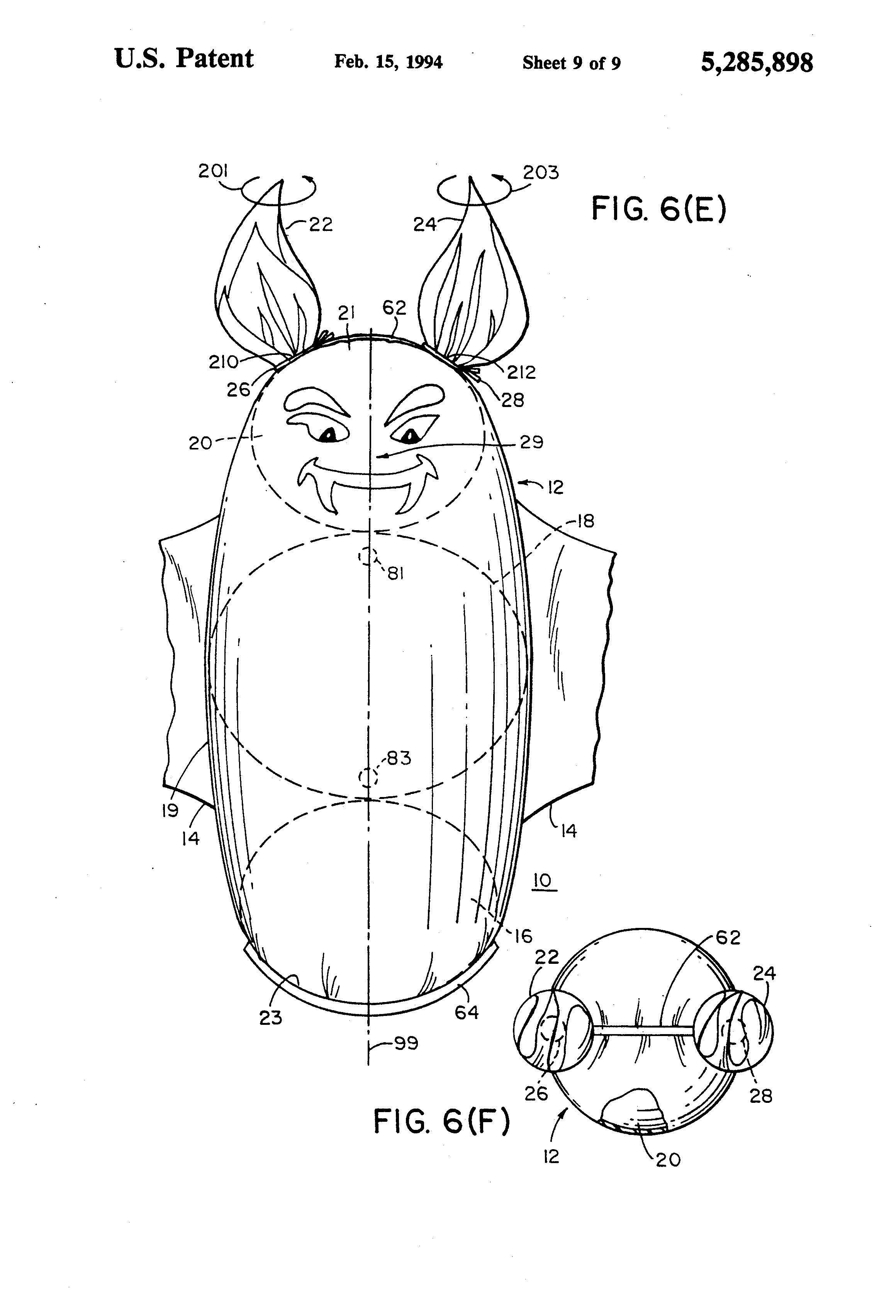
Halloween Patent: Halloween Board Game
Going out on Halloween is not for everyone, younger kids may scare easily, some may be too old to trick-or-treat, or the weather may be nasty. The HALLOWEEN BOARD GAME. U.S. Patent No. 5,662,328 is still a fun way to incorporate that Halloween fun even if going out isn't an option. Cyrilla D. Pecoy was granted a patent for a HALLOWEEN BOARD GAME on September 2, 1997.
In this game the players navigate a graveyard, haunted house, pumpkin patch, and corn field. They collect tokens that come in the shape of popcorn, candy corn, apples, oranges, doughnuts, lollipops, and candy bars. They can also choose what character they want to be from a witch to a vampire.
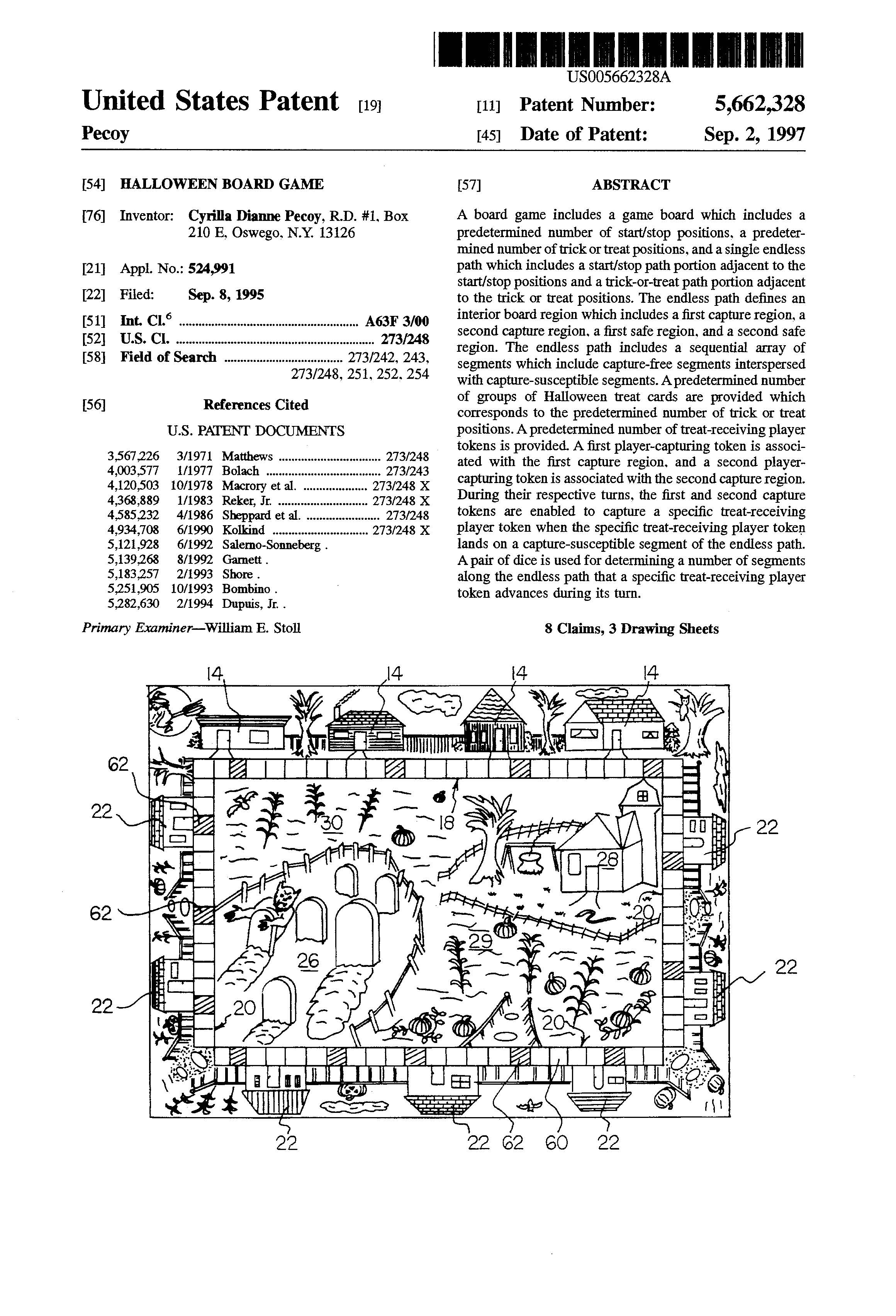
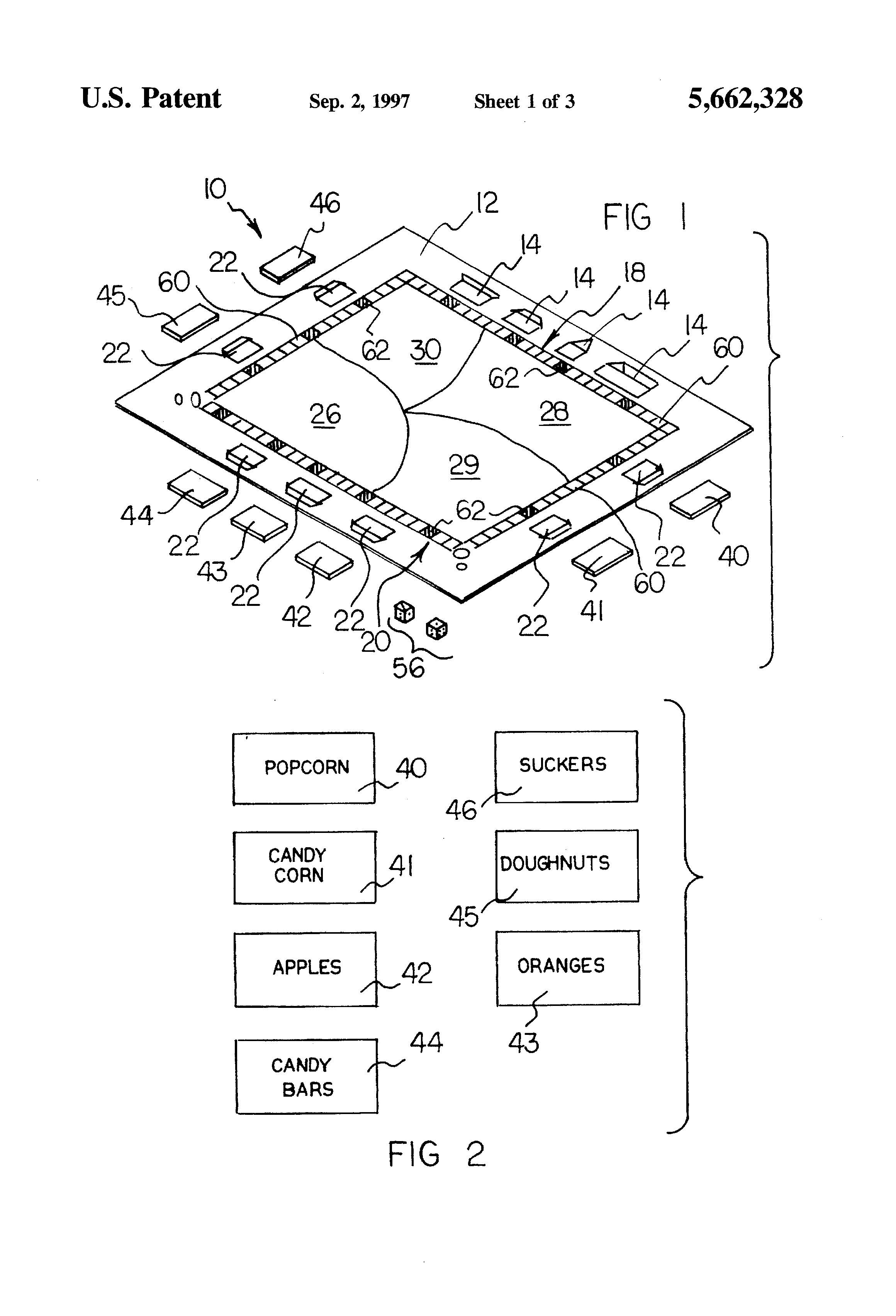
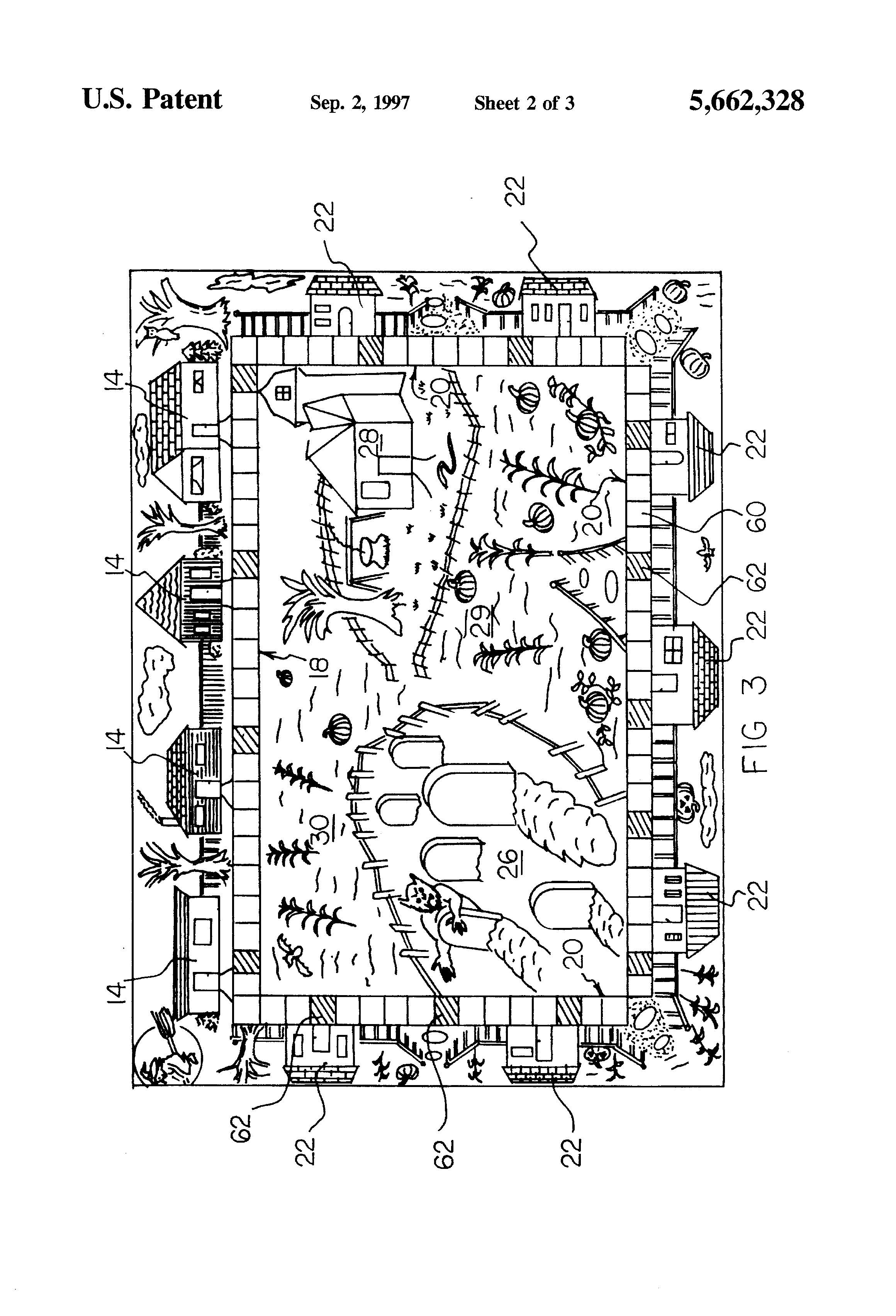
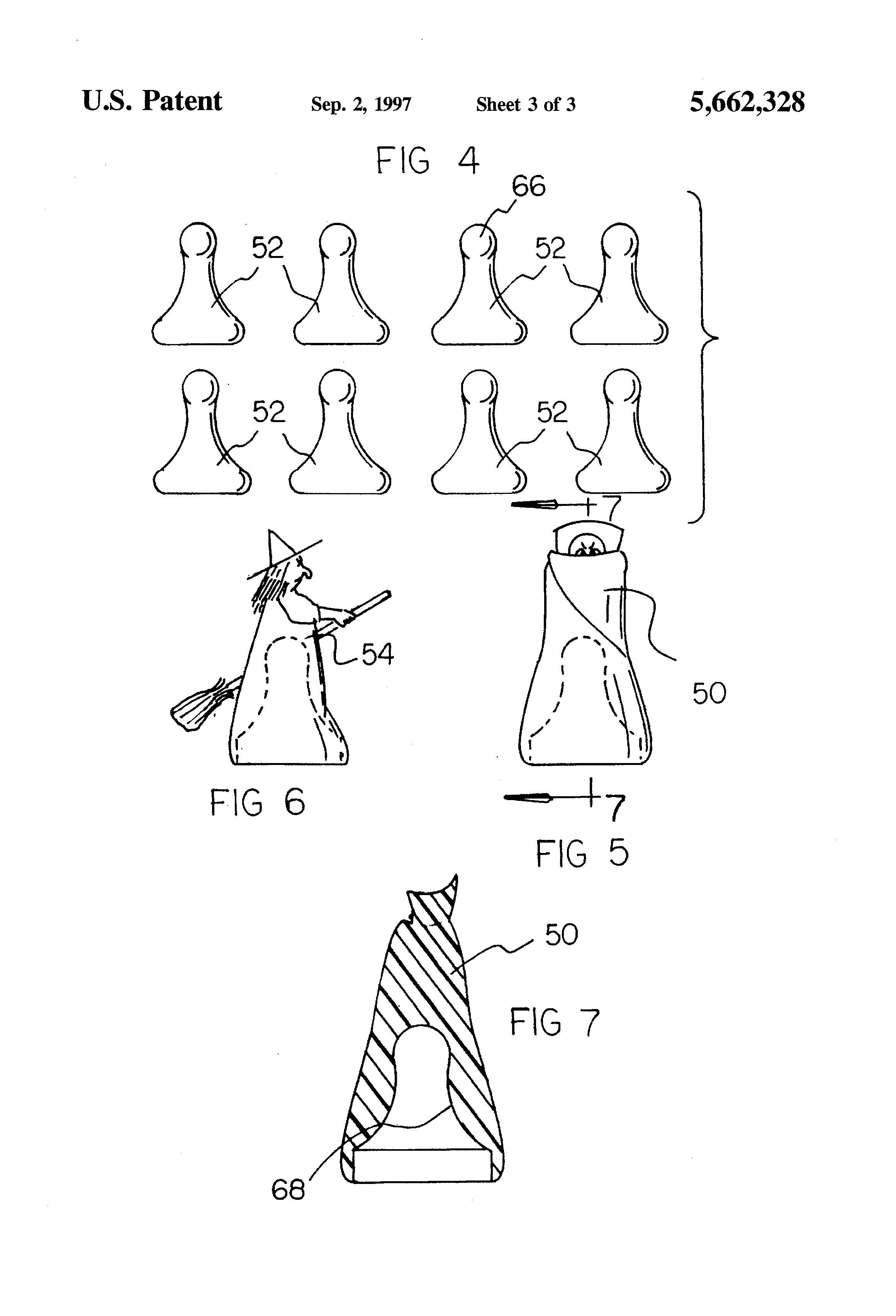
Redskins Trademark Dispute Ended after Supreme Court Ruling
The ruling from the United States Supreme Court in Matal v. Tam involving the disparagement clause of the Lanham Act has already affected other pending cases. The unanimous ruling by the Supreme Court stated that a trademark cannot be denied based on disparaging language as it violates the Free Speech Clause of the First Amendment.
One case impacted by the Supreme Court’s ruling involves the Washington Redskins professional football team, the Department of Justice, and a group of five Native Americans.
The case was waiting to be heard by the 4th Circuit Court of Appeals, but earlier this year, the plaintiffs and the Department of Justice, asked the court to rule in favor of the Redskins and end the case. Mark Freeman, an attorney for the Justice Department’s civil division wrote the Court and stated "[c]onsistent with Tam, the Court should reverse the judgment of the district court and remand the case with instructions to enter judgment in favor of Pro-Football." Jesse A. Witten, the attorney representing the Native Americans said “[t]here’s no more challenge to make. There’s a legal case and then there’s a cause. It was a galvanizing force that caused people to pay attention to the cause.”
The dispute began almost 25 years ago when Native American leaders met with Edward Bennett Williams, then president of the Redskins football team, to persuade him to change the team’s name. While Williams refused to change the name, , he did make other changes. For example, Williams directed the organization to remove the phrase “Scalp ‘em” from the team’s fight song and replace it with “Beat ‘em.” He also ordered the team’s cheerleaders to stop wearing black braided wigs.
In 1992, 20 years since that first meeting with Williams, Native American activists took legal action against the team. Suzan Shown Harjo, leader of the activist group, filed a petition with the United States Patent and Trademark Office (USPTO) requesting the team’s six trademark registrations be revoked. Seven years after the petition was filed, the USPTO ruled in Harjo’s favor and revoked the team’s six trademarks. Unfortunately for Harjo, the USPTO’s decision was later reversed due to insufficient evidence.
The Redskins never gave up their fight, they did not feel the team’s name was offensive and did not feel Native Americans did either. The team was urged by many to change their name, even former President Barack Obama asked for a name change, but they refused. The team was met with another lawsuit filed by five Native Americans. They were led by Amanda Blackhorse, who filed a separate petition with the USPTO requesting the six trademark applications be revoked. The USPTO ruled in favor of Blackhorse and held that the team could not trademark its name because anything that is “scandalous, immoral, or disparaging” is prohibited from trademark registration. This was further reinforced in 2015 when the District Court for the Eastern District of Virginia discussed the relationship between Section 2(a) of the Lanham Act and the First Amendment.
The Lanham Act provides: “No trademark by which the goods of the applicant may be distinguished from the goods of others shall be refused registration on the principal register on account of its nature unless it— (a) Consists of or comprises immoral, deceptive, or scandalous matter; or matter which may disparage or falsely suggest a connection with persons, living or dead, institutions, beliefs, or national symbols, or bring them into contempt, or disrepute….” Lanham Act, Section 2(a), 15 U.S.C. §1052.
As noted above, the United States Supreme Court’s opinion differed from that of the USPTO’s and the lower courts initial rulings. Justice Samuel Alito stated denying the registration of the “offensive” name “offends a bedrock First Amendment principle: Speech may not be banned on the ground that it expresses ideas that offend.”
With the case being dropped, the Redskins will now await the 4th Circuit to issue an order that will permanently restore the team’s trademark protection.
Suiter Swantz IP is a full-service intellectual property law firm, based in Omaha, NE, serving all of Nebraska, Iowa and South Dakota. If you have any intellectual property questions or need assistance with any patent, trademark, or copyright matters and would like to speak to one of our patent attorneys please contact us.

